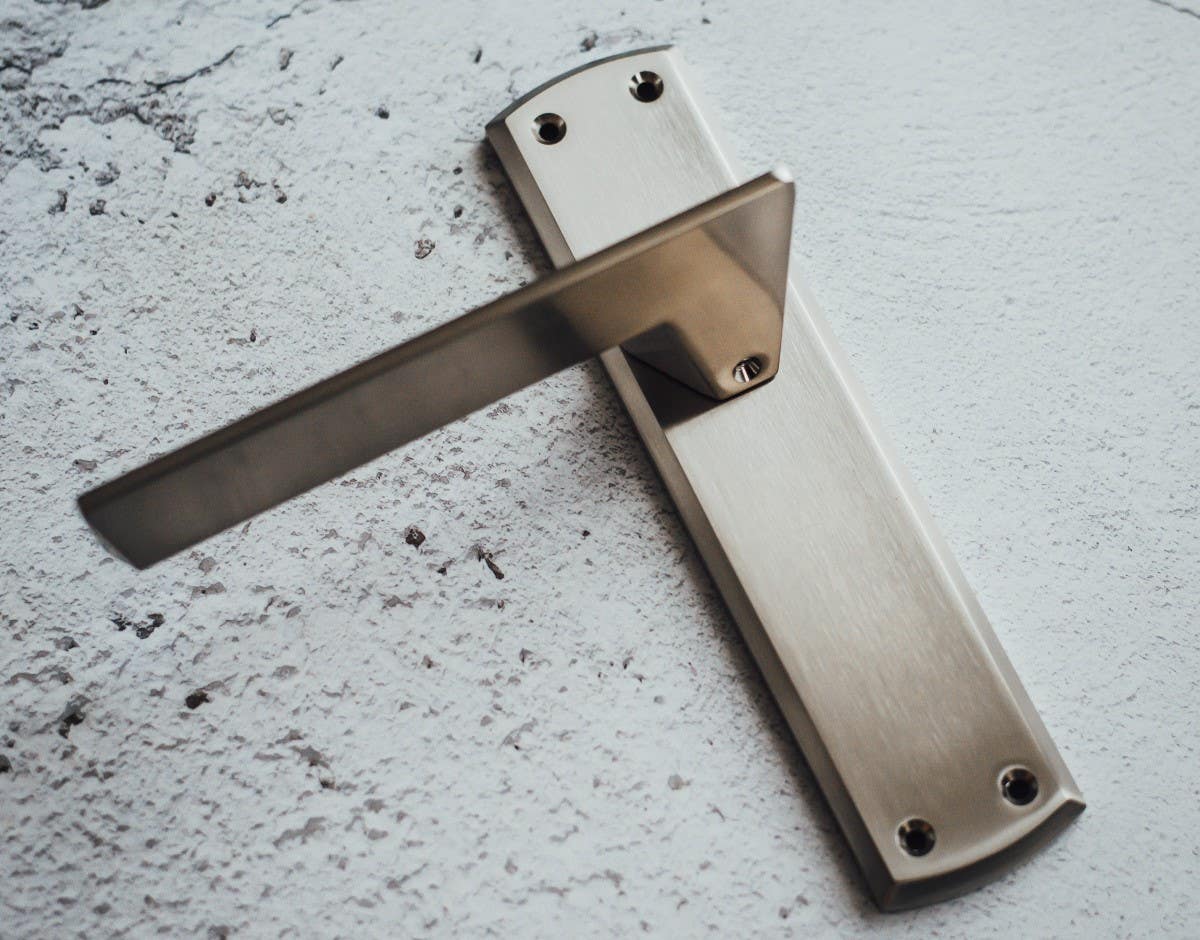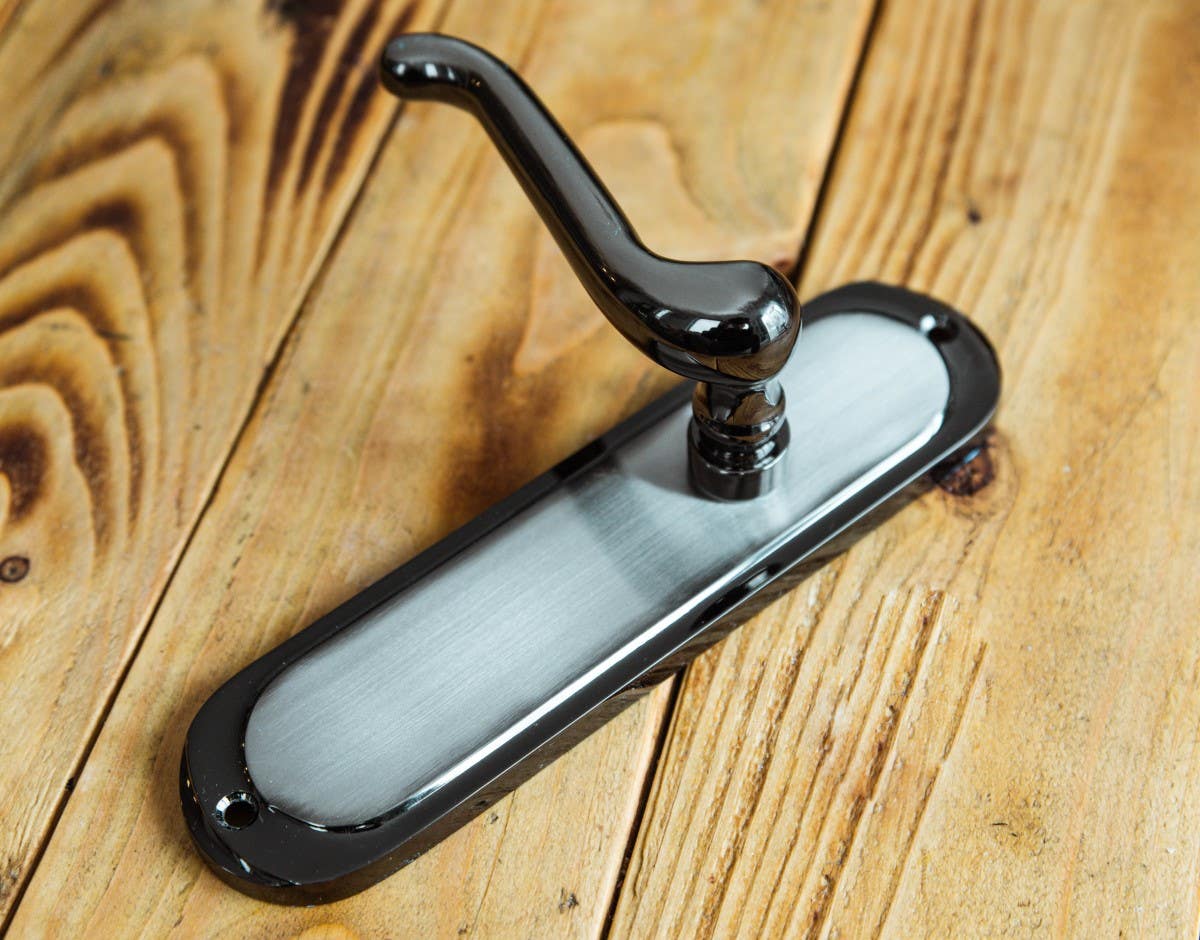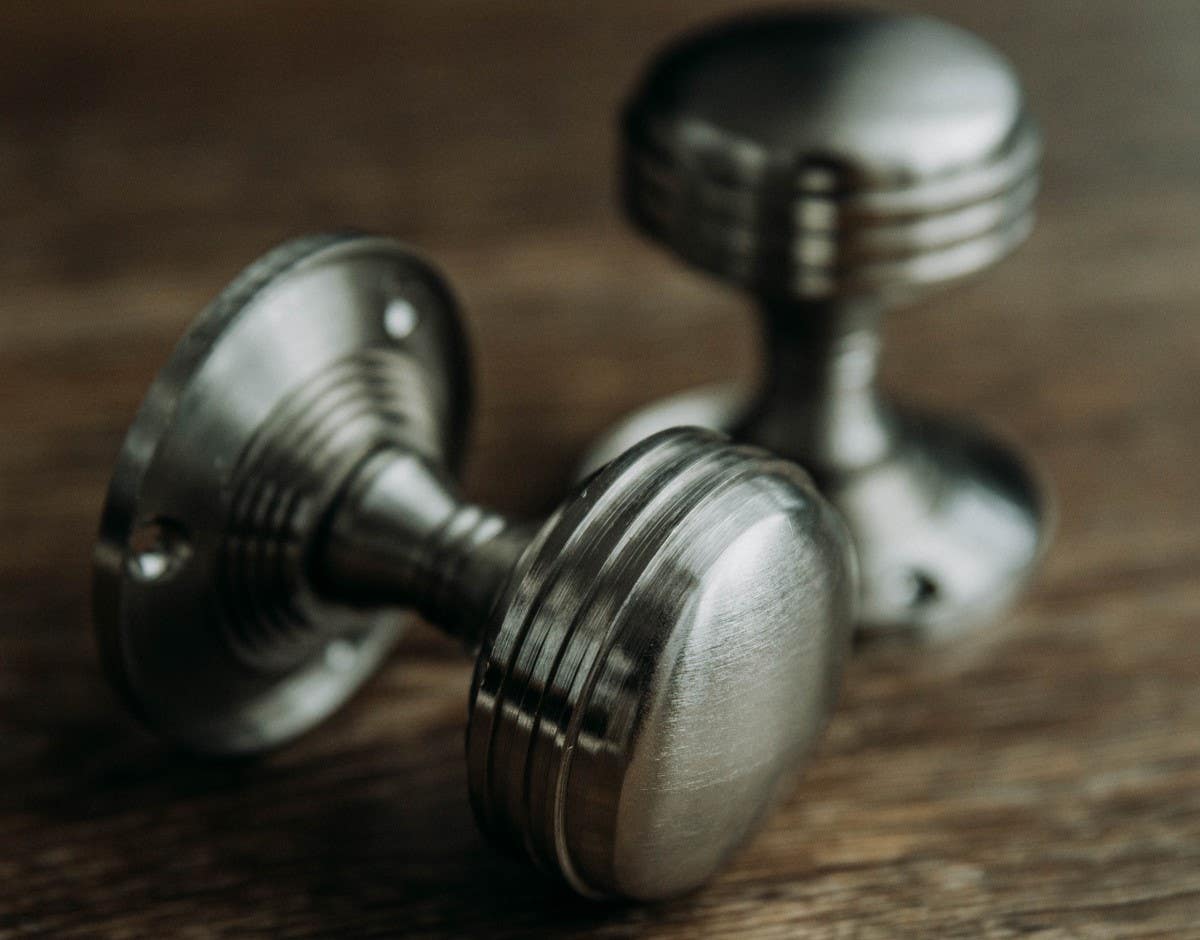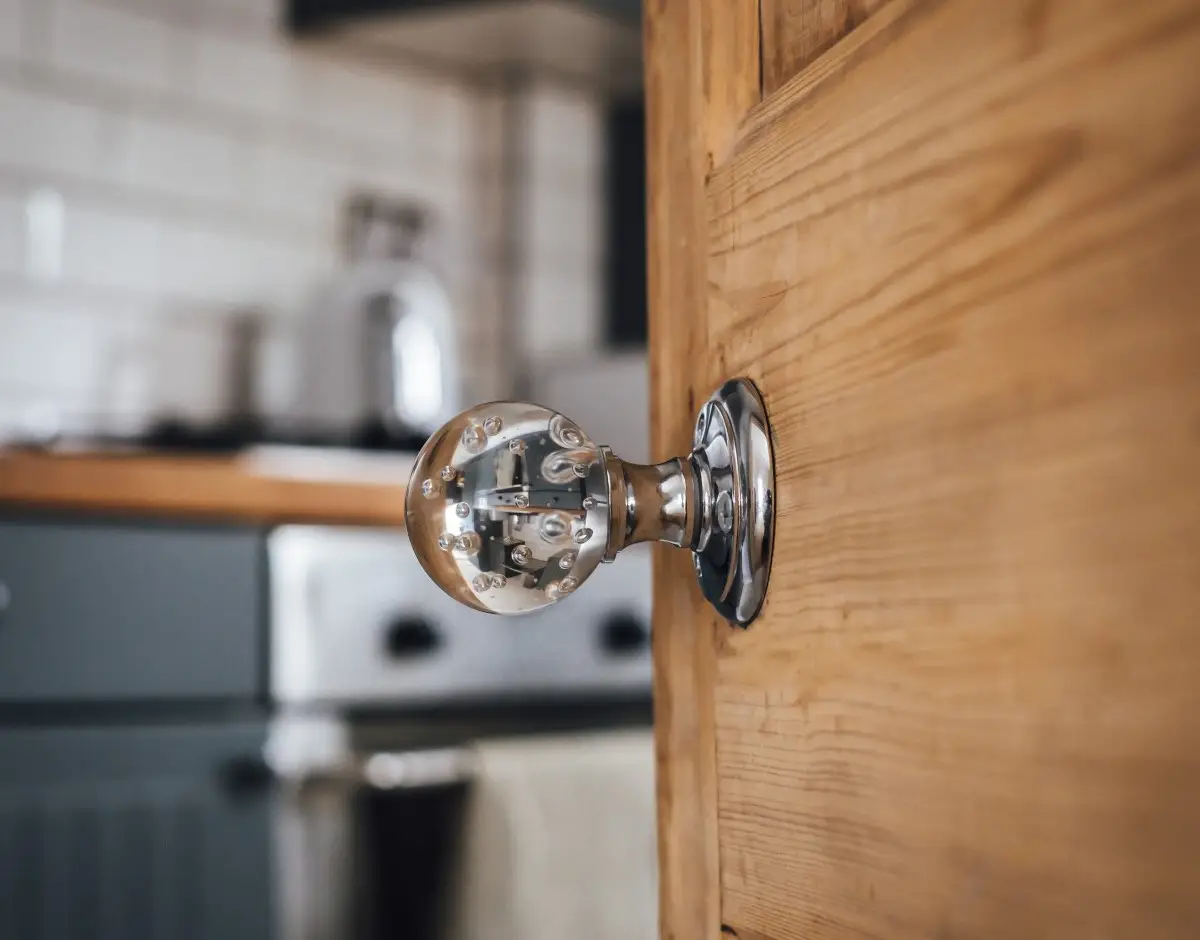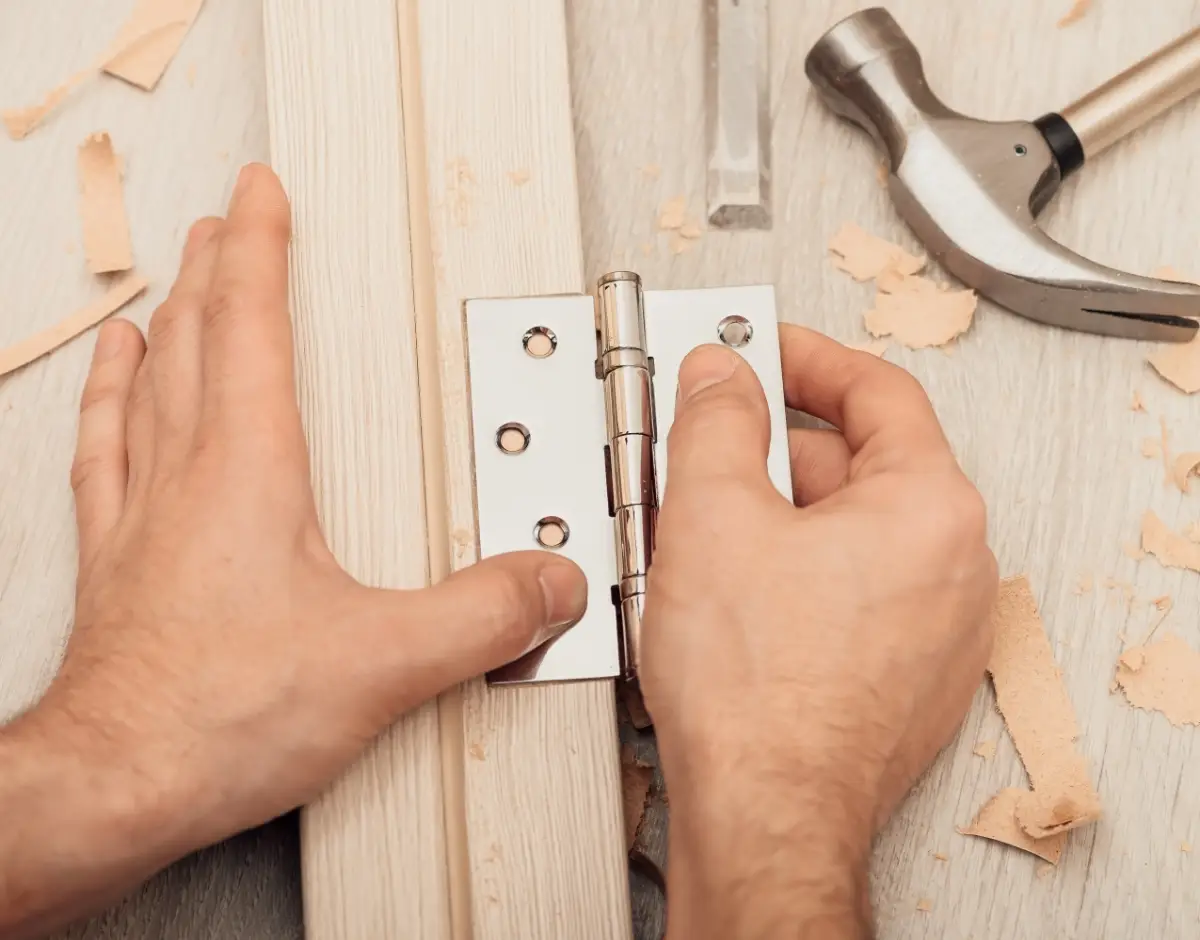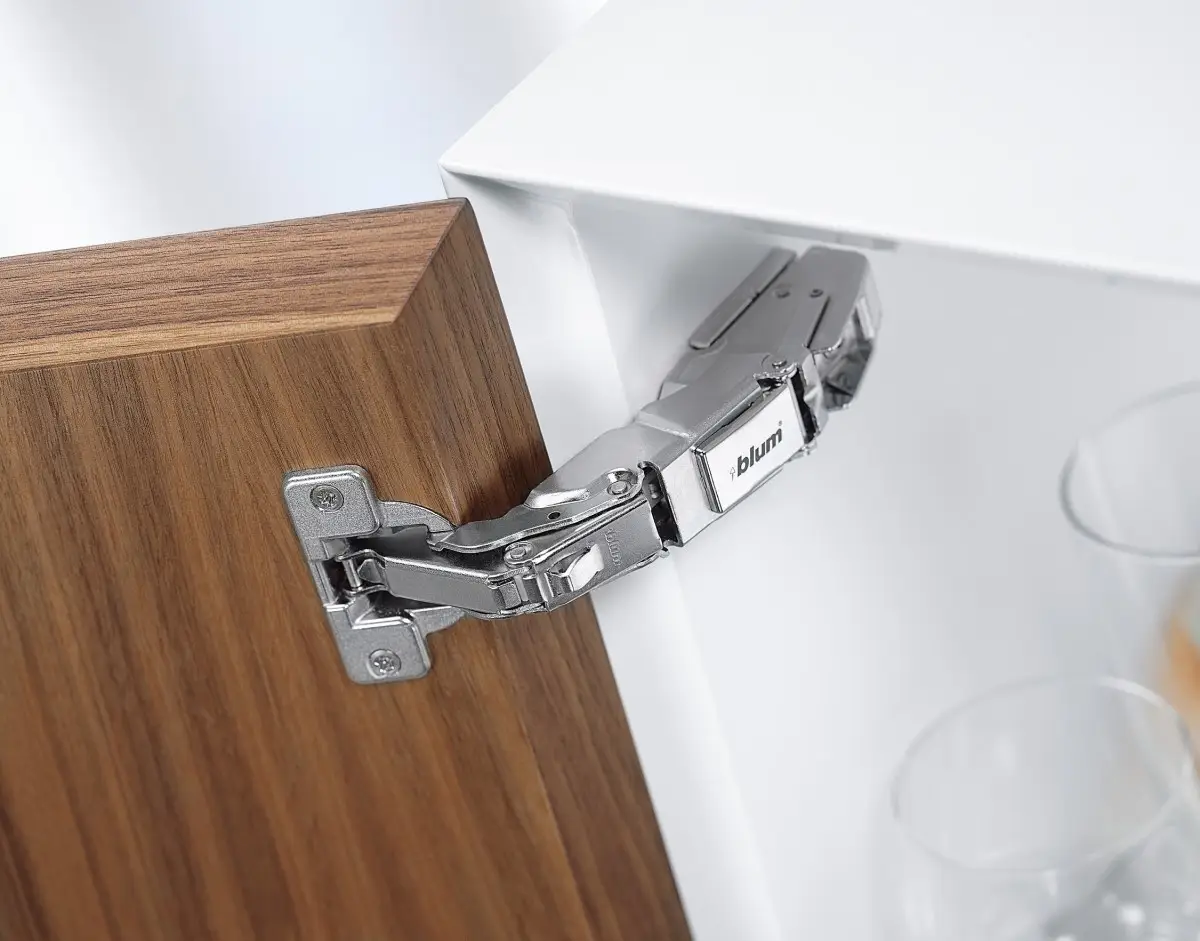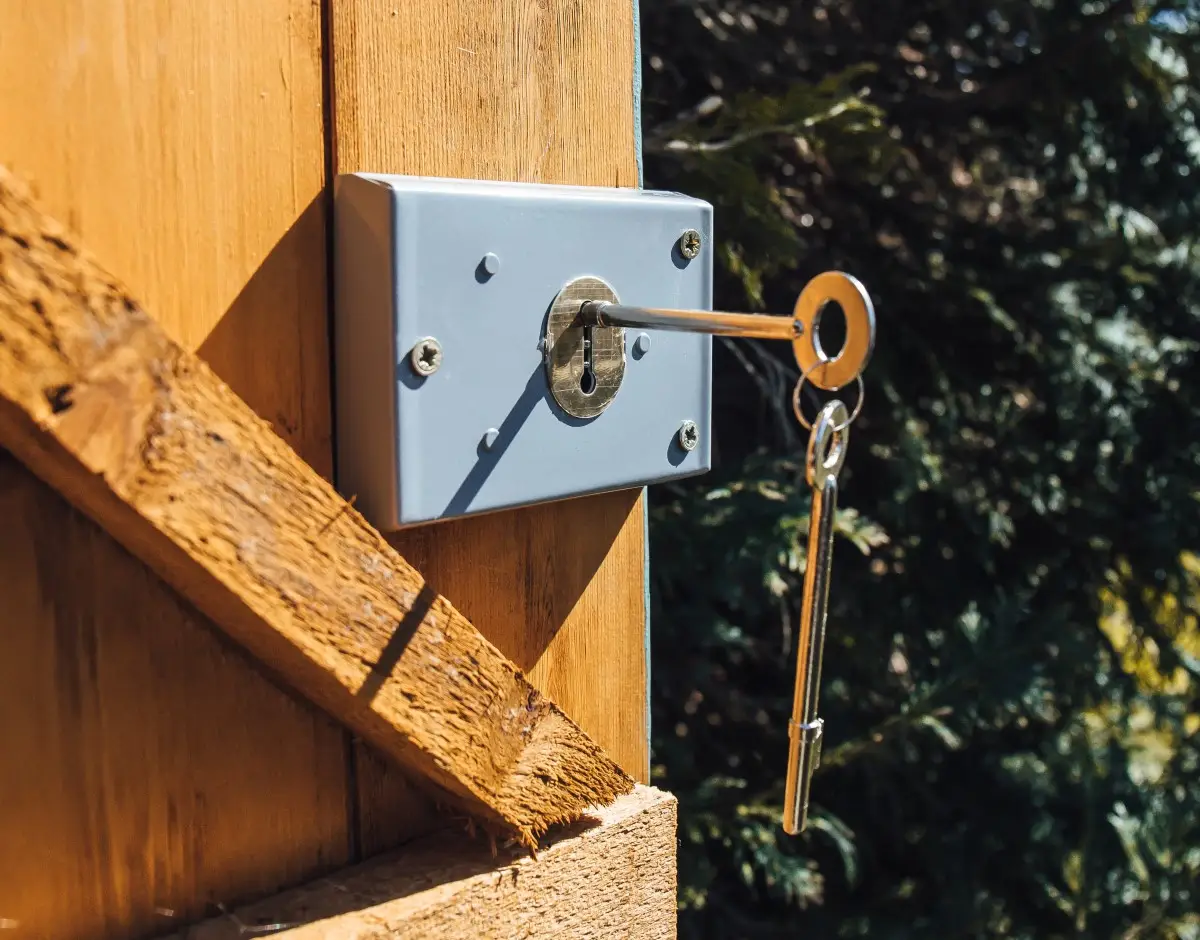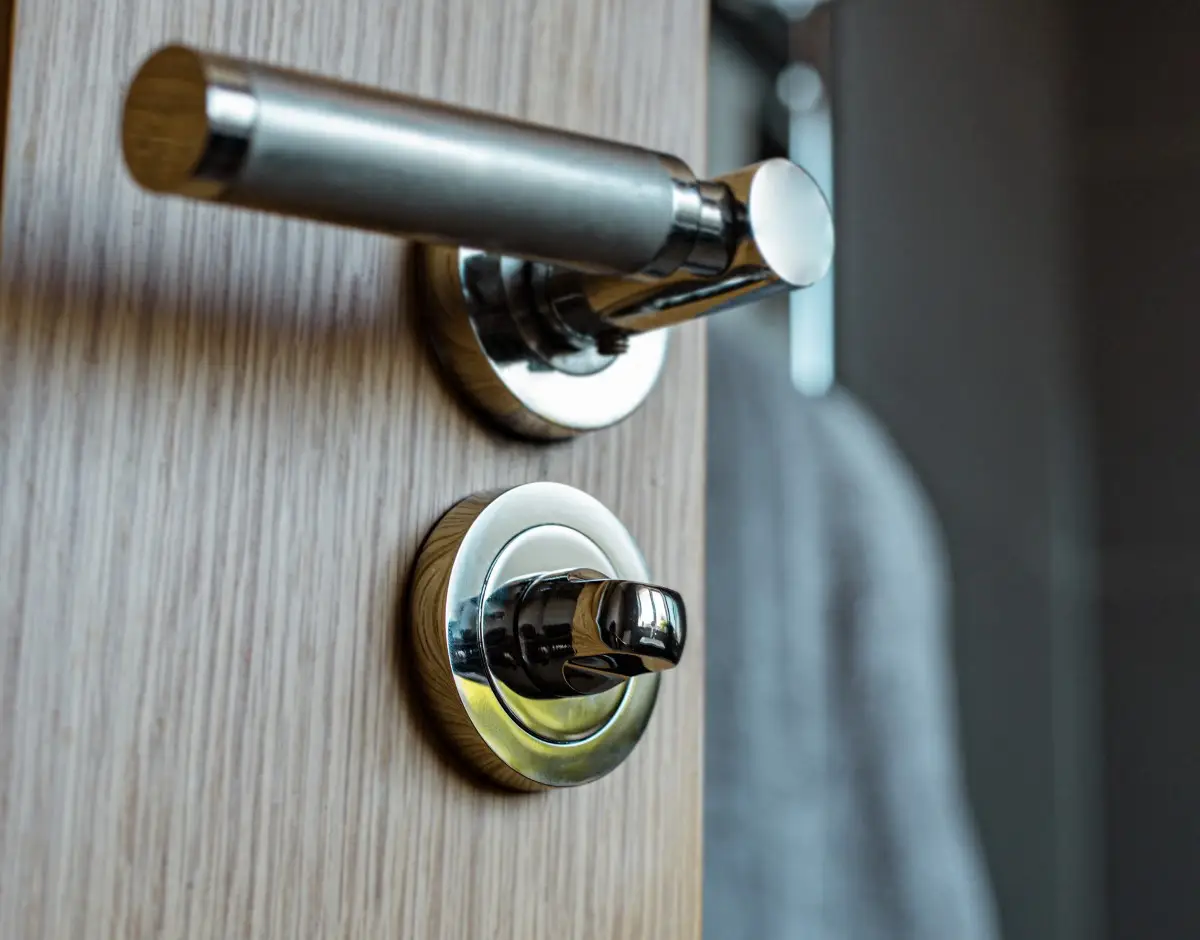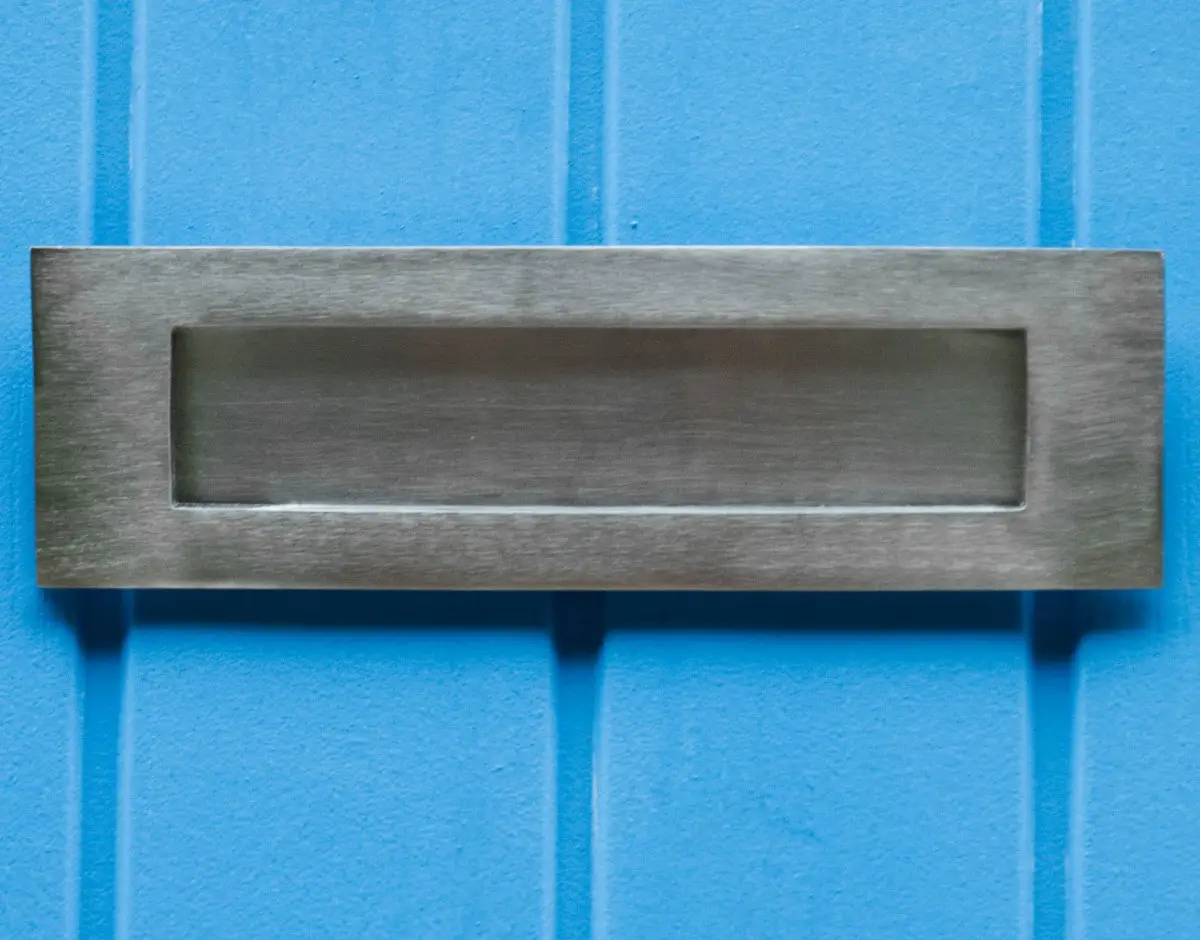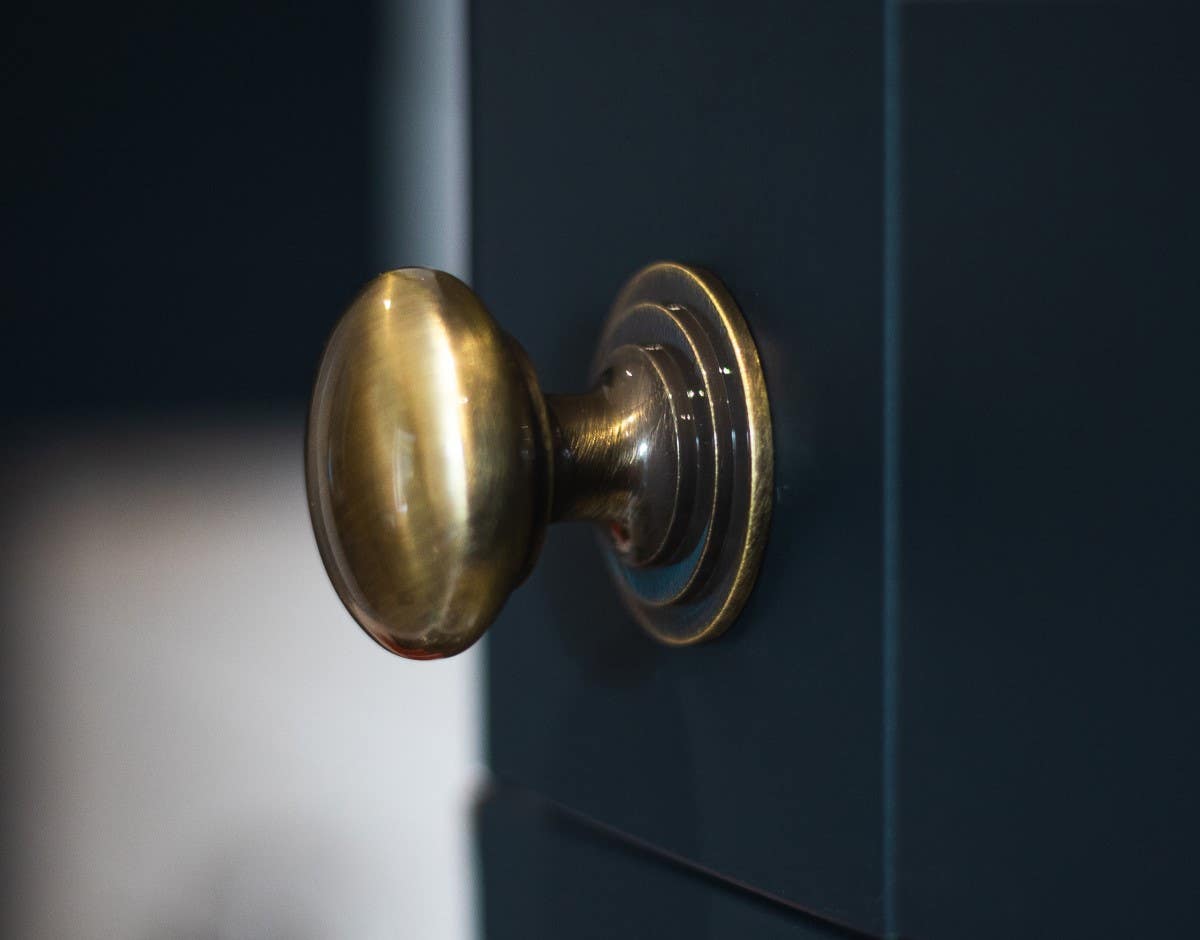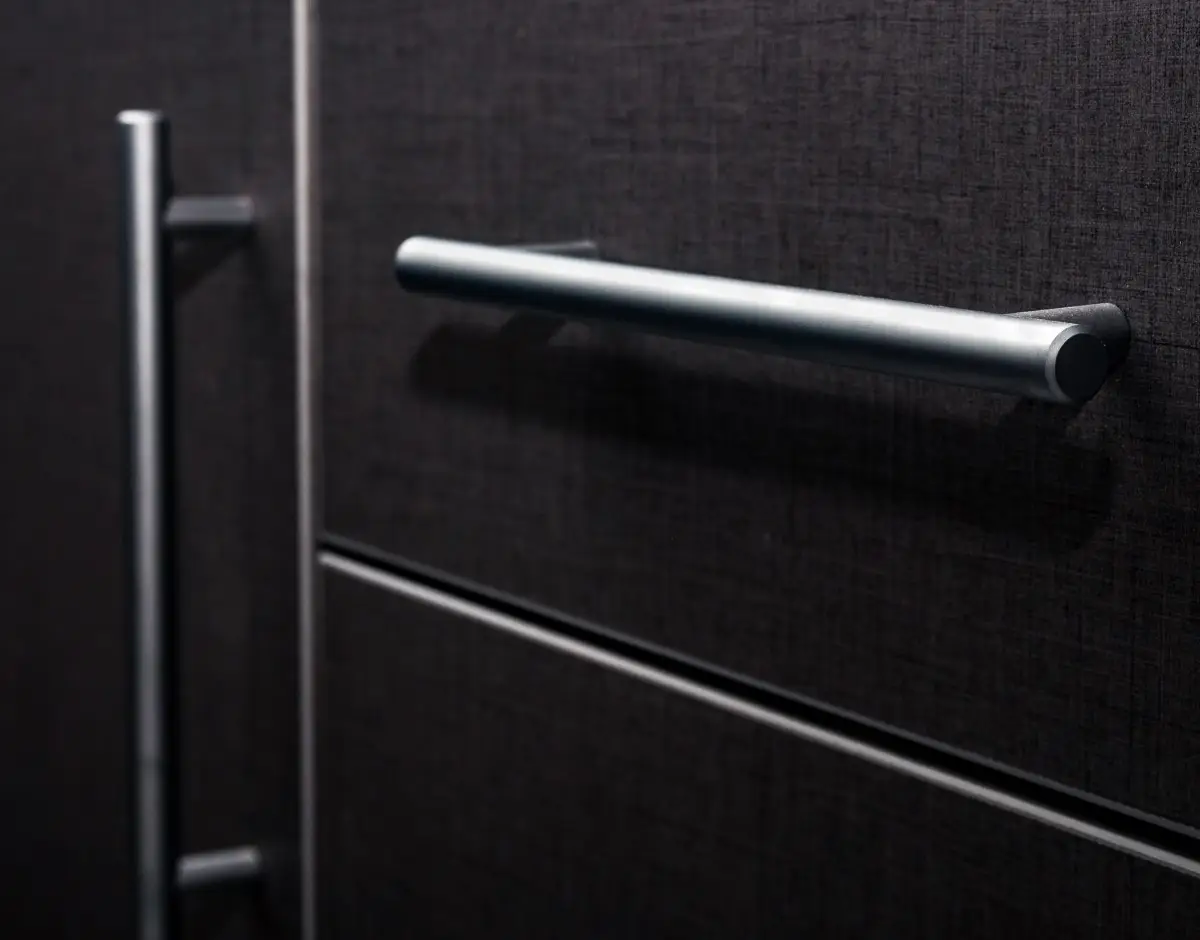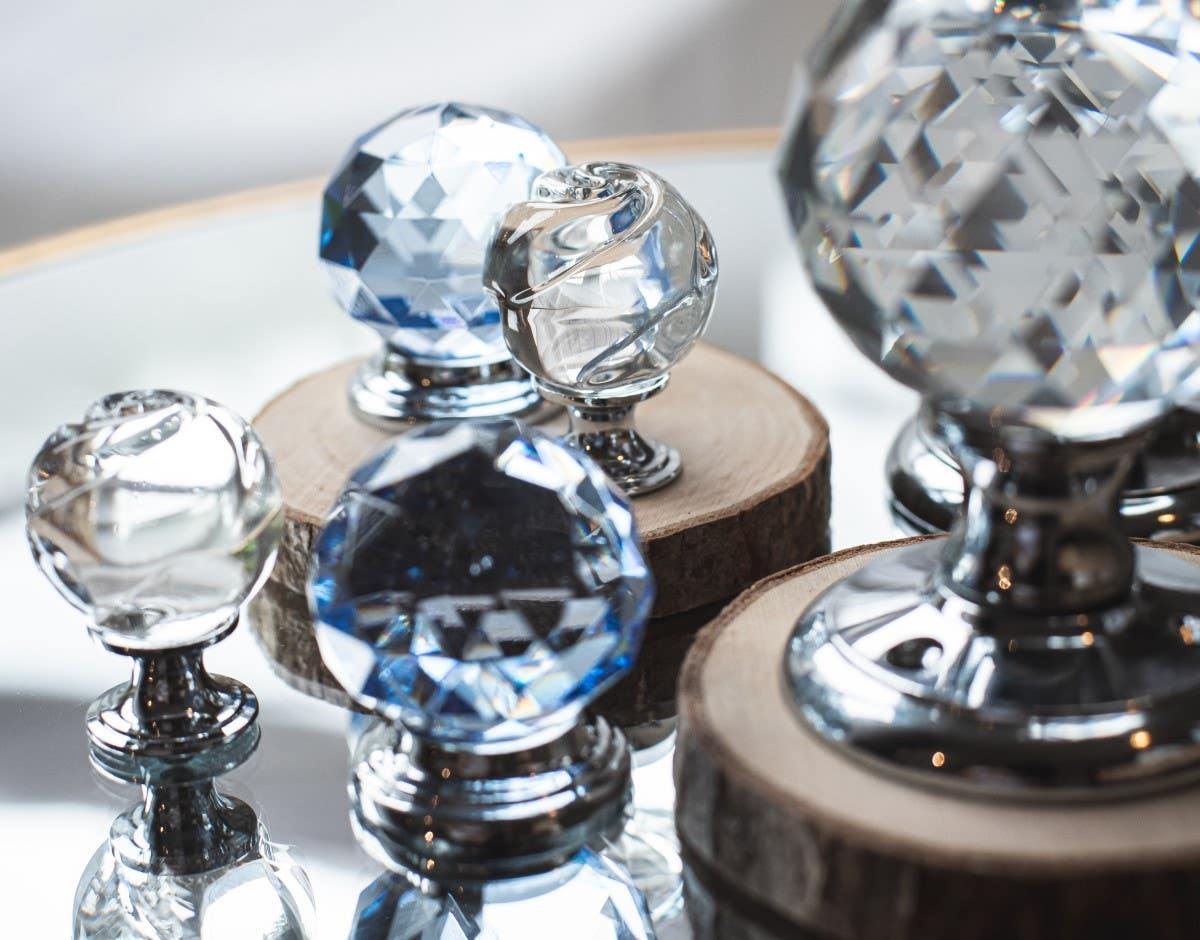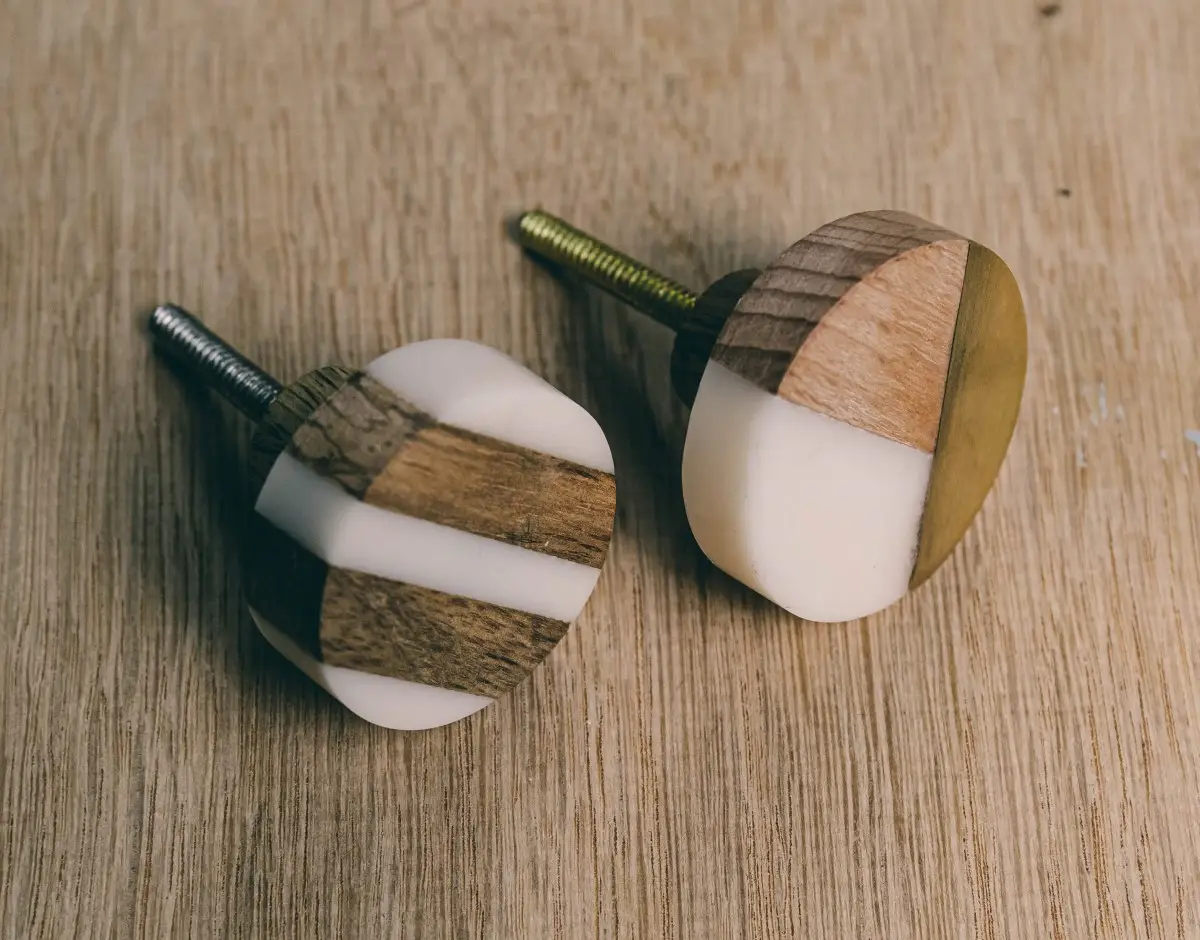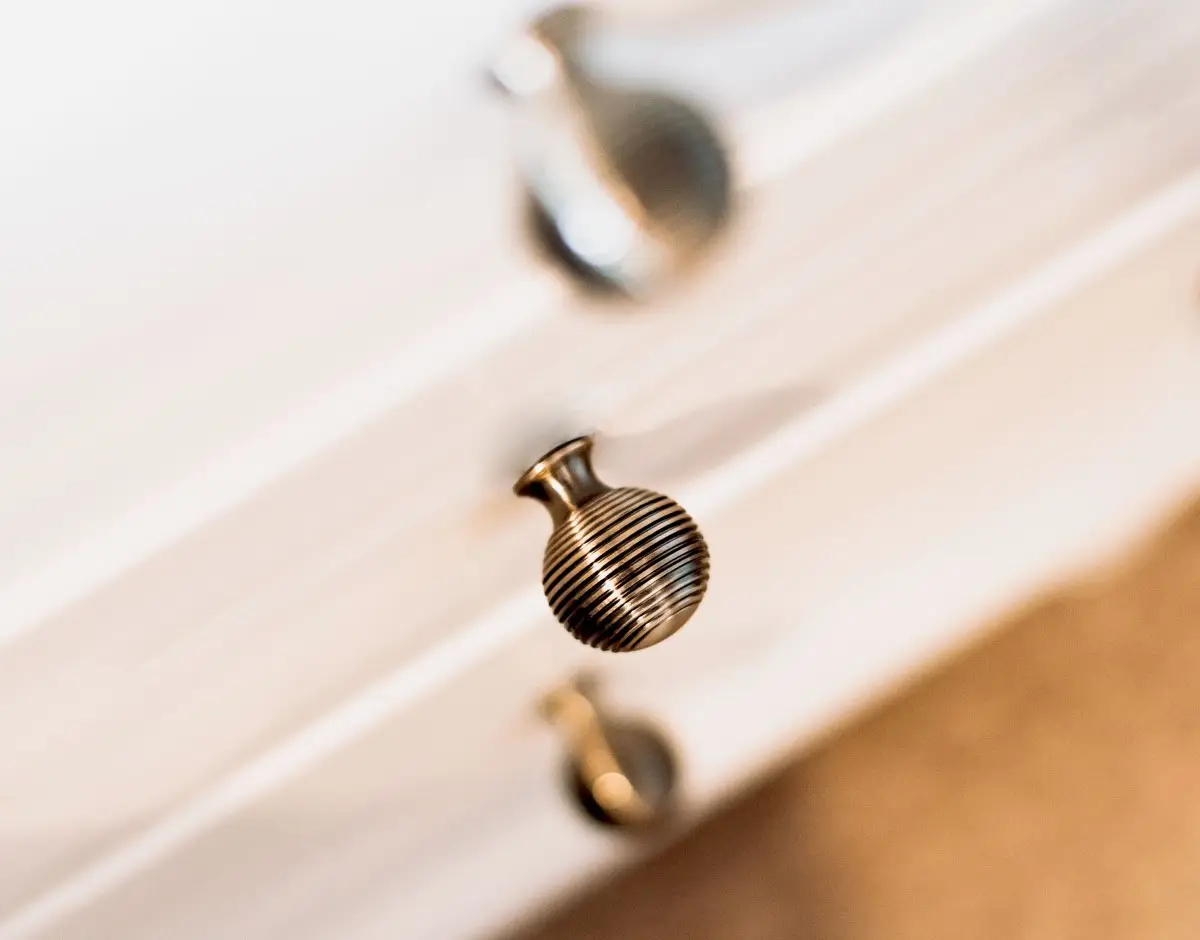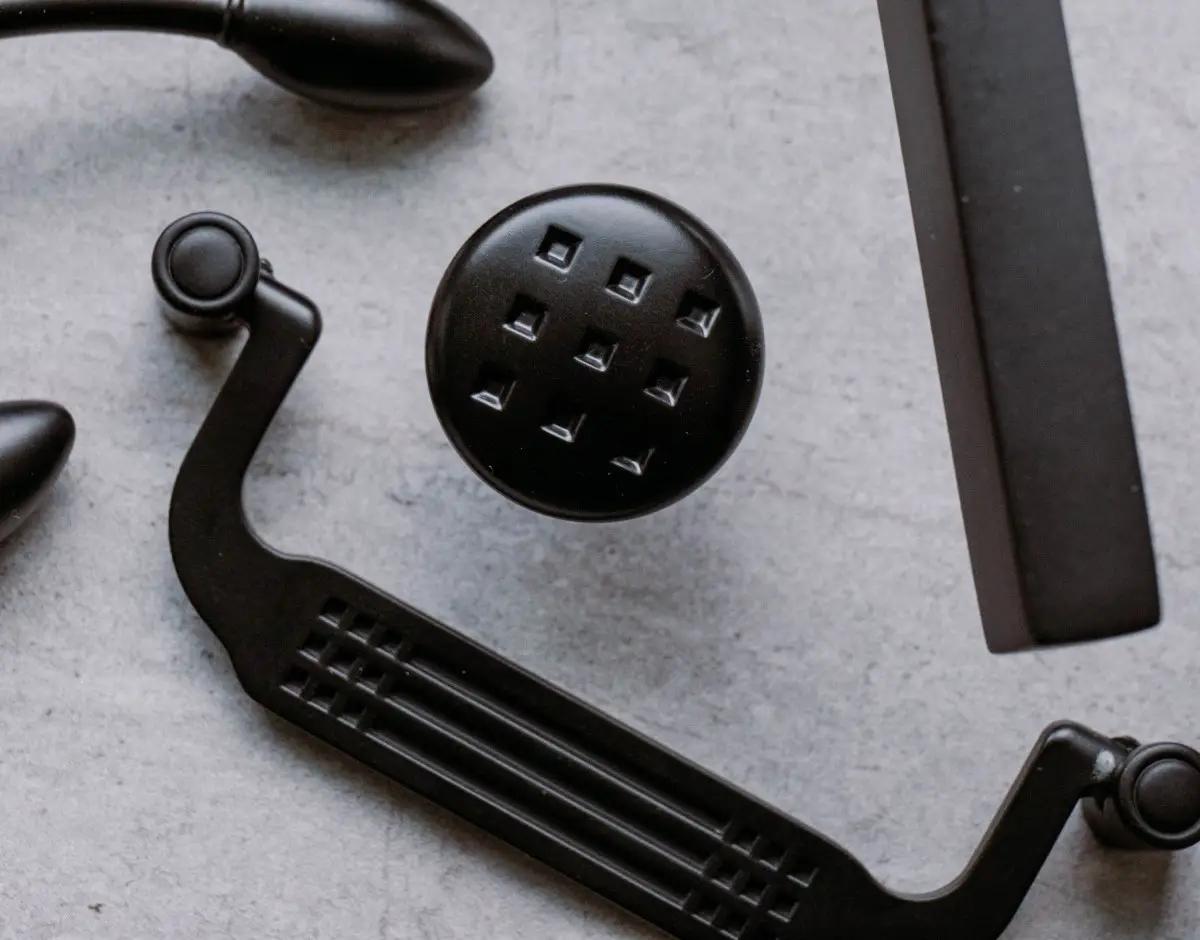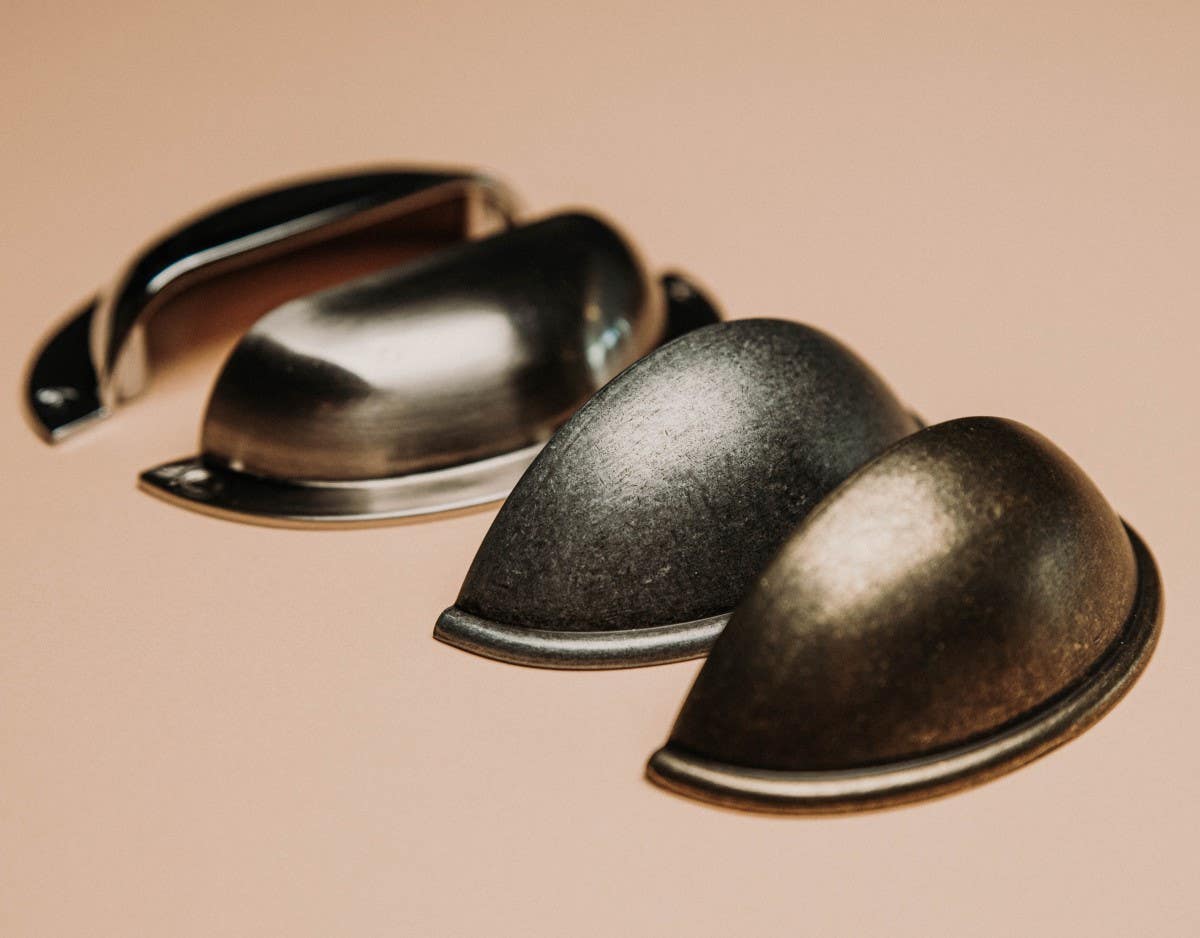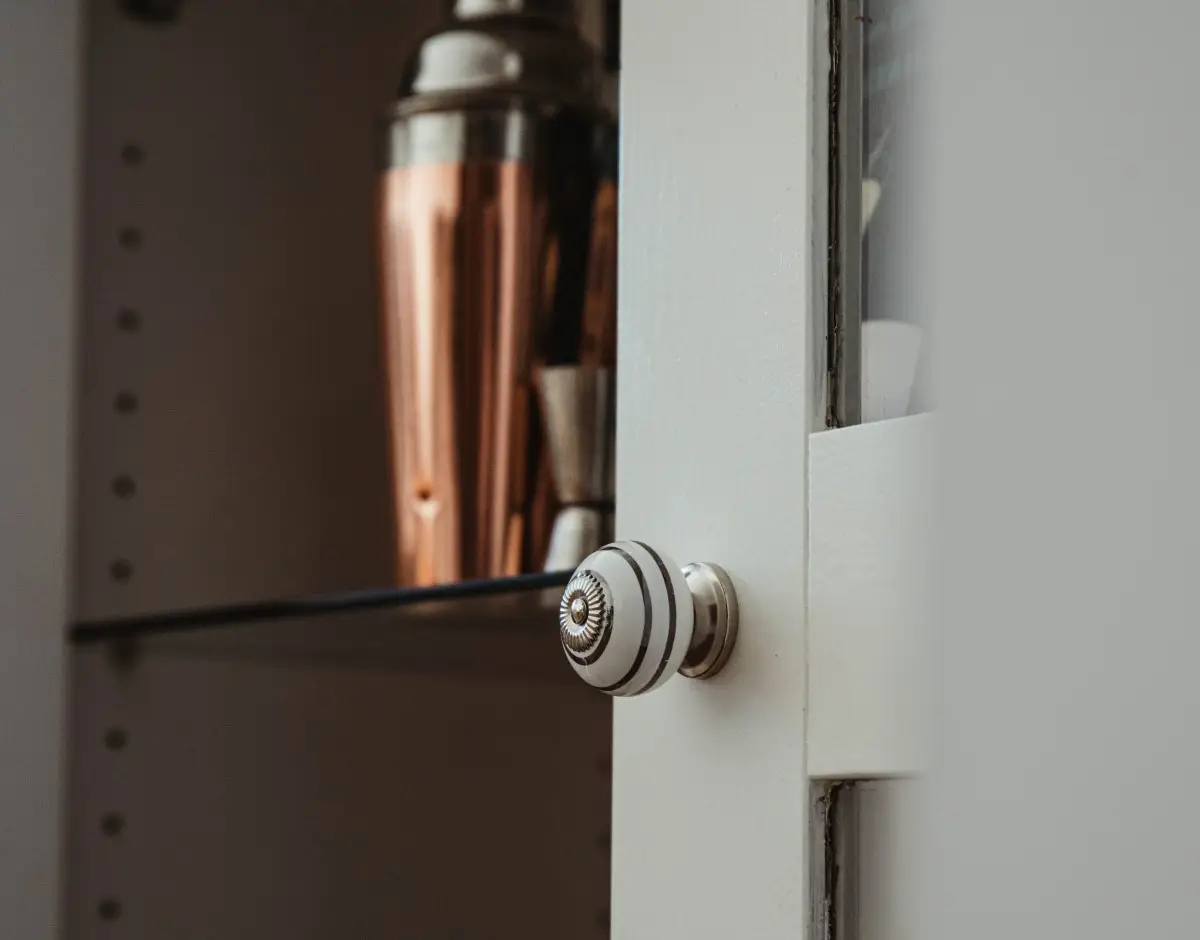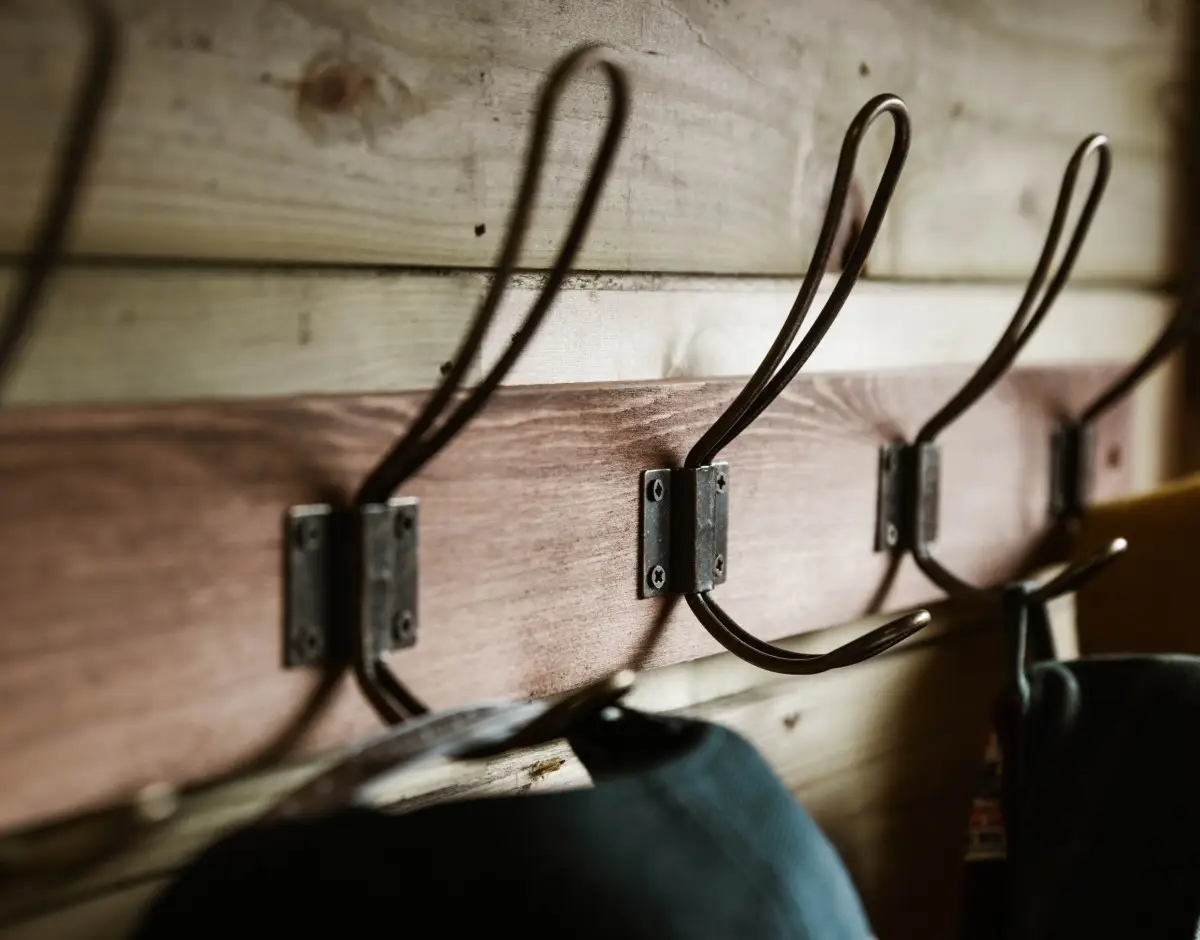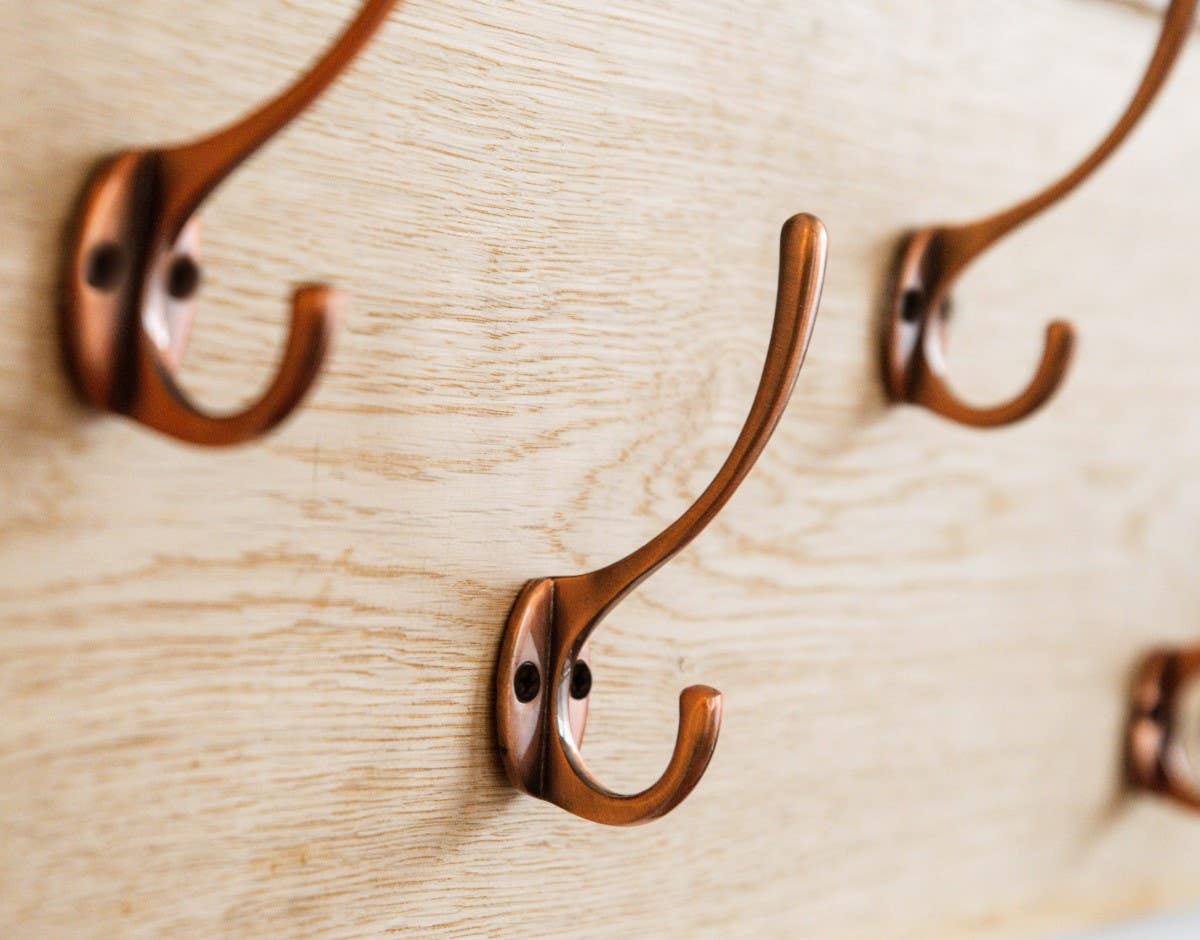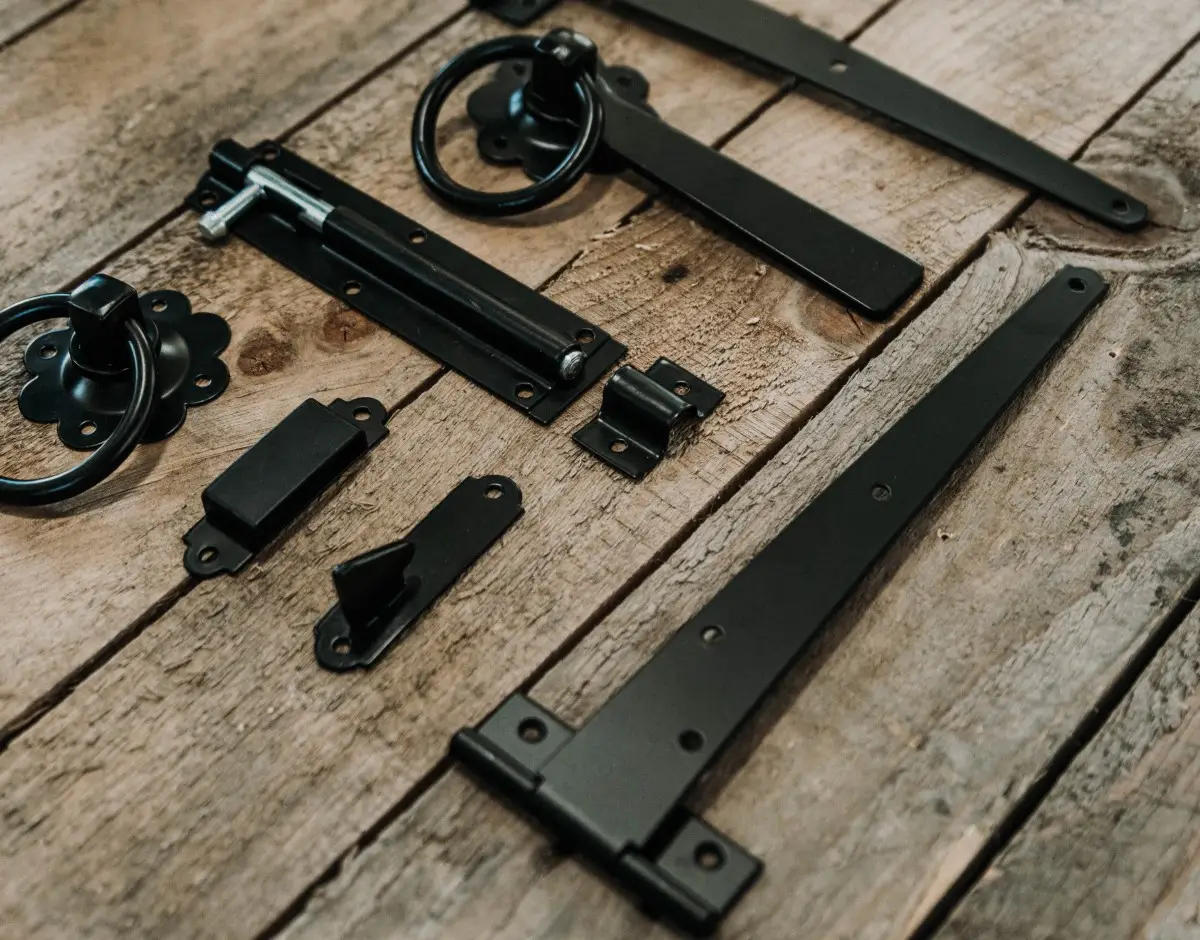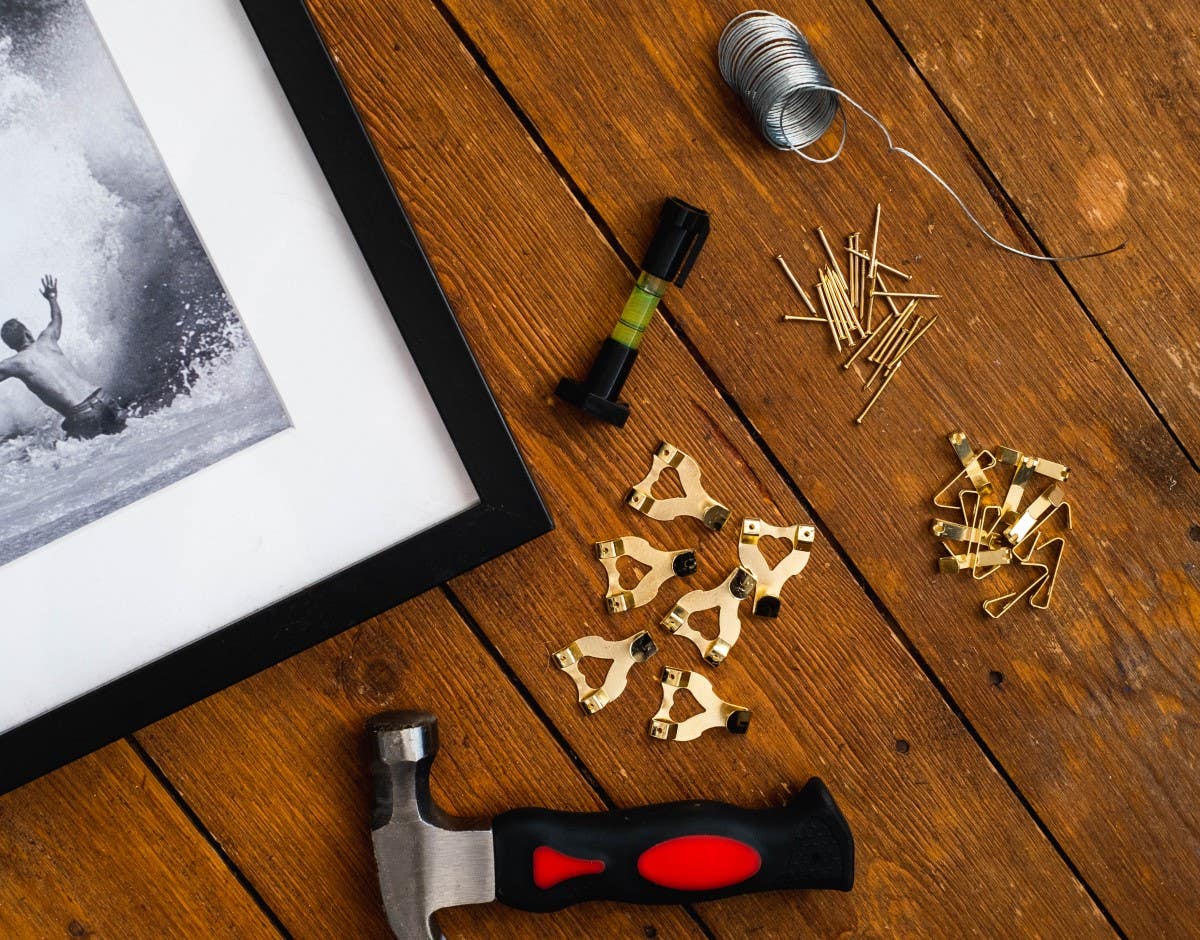How To Remove Rust from Iron Garden Furniture in 4 Easy Steps
Article Topics:
1. Assess the Situation
2. Clean Furniture Surfaces
3. Smooth Down Rougher Rust
4. Apply a Direct to Rust Paint
Introduction
During the warmer months of the year you'll probably be keen to revitalise your home’s outdoor spaces, to enjoy the sunshine, to relax, to socialise with family and friends for drinks, barbeques and parties. And that of course will mean you’ll need to make sure your outdoor furniture is in good condition and summer ready.
Certain furniture materials will, to a greater or lesser degree, need sprucing up after winter storage: plastics, timber, rattan, and especially metals, such as iron.
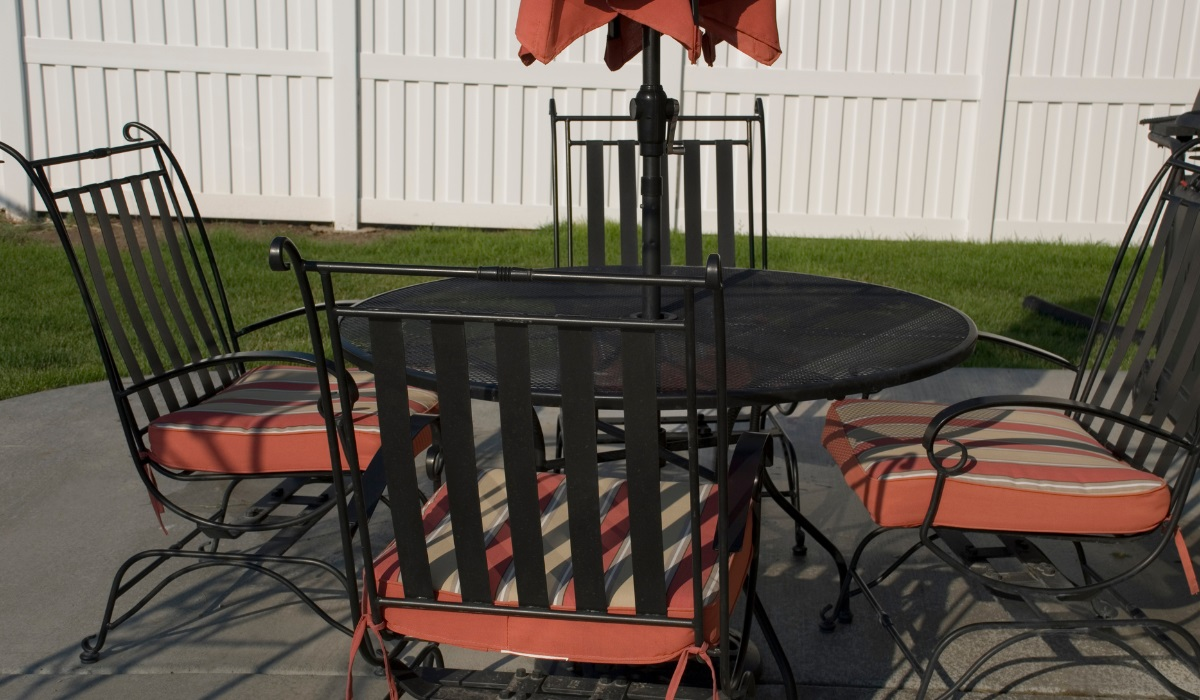
Restoring Iron Garden Furniture
Iron garden furniture looks great on the patio, decking, lawn, balcony or wherever you choose to enjoy your outside spaces. But the problem is, over the winter months iron outdoor furniture will likely have been exposed to moisture, whether left covered outside in your garden or stored in a shed or garage.
Regardless of how you have stored (or not) your iron garden furniture, it will need some level of TLC, from a simple wipe down, to removing rust, to a full-on renovation job.
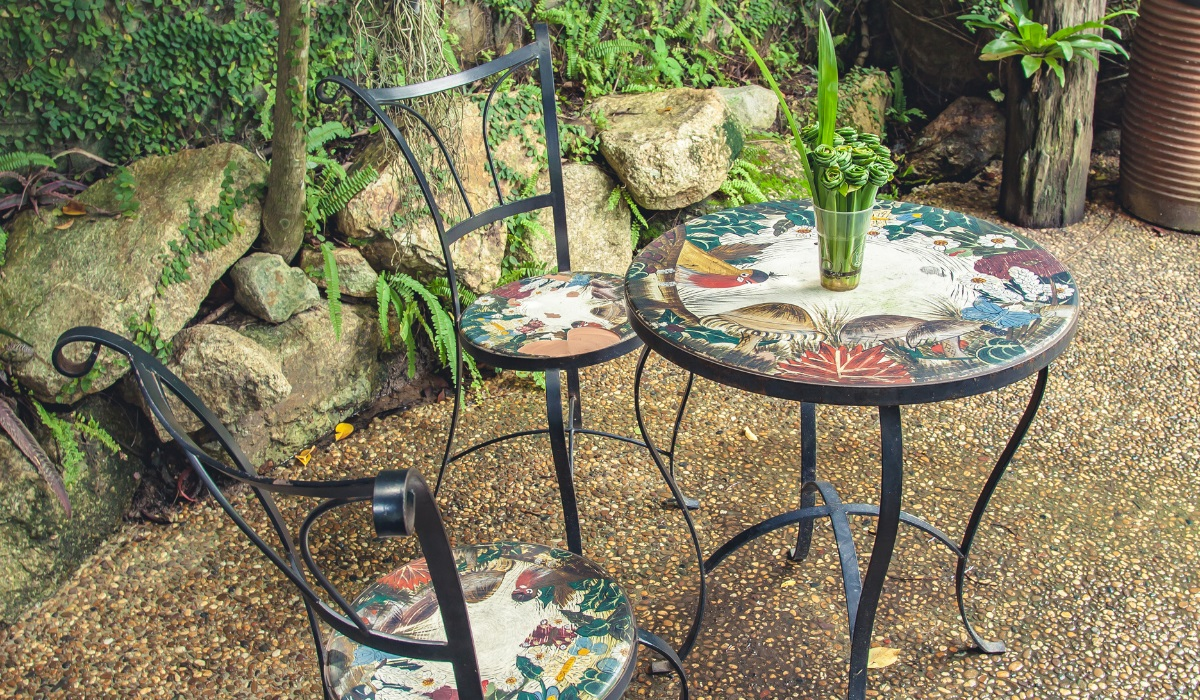
This DIY guide will show you how to restore your iron garden furniture to its previous glory, helping to bring your outdoor spaces back to life for the spring and summer.
We’ll look at how to treat iron to recover from rust, and how to re-finish your iron outdoor furniture so it not only looks great, but will be better protected from future rusting.
4 Steps to Cleaning Rust from Iron Garden Furniture
There are many novel ideas around removing rust. Some of them involve everyday household items, such as baking soda, Coca Cola, white vinegar and aluminium foil. And using these items may well have merit. But if you want a straightforward, no nonsense method for getting your iron garden and patio furniture in shape for the spring and summer, read on.
How Much Work Will it Take?
You’ll probably be asking yourself: “How difficult will this be and how long will it take?”.
The answer is that it will depend on how handy you are and how dirty and rusty your furniture pieces are. But you don’t need to be a DIY whizz for this job — not at all. It’s all fairly straightforward. And the process isn’t long-winded. Far from it.
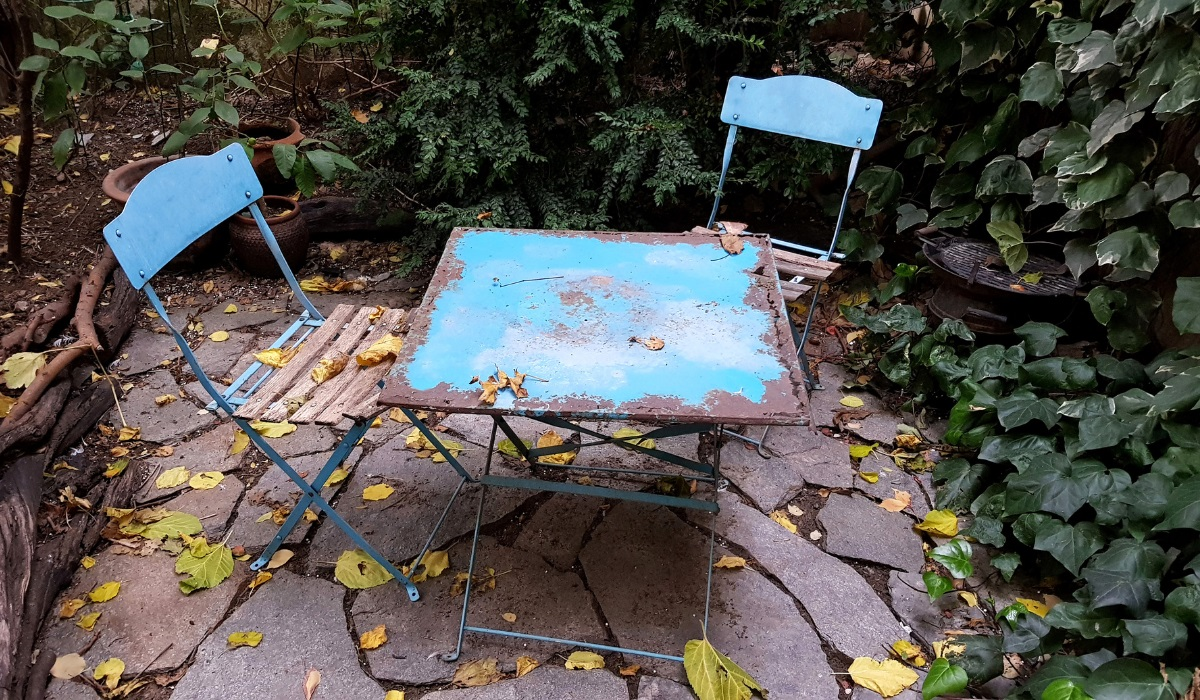
To restore your iron garden furniture will, as we've mentioned, depend on how degraded it has become. Dirt, tarnishing and surface rust can be easily treated to bring your furniture pieces back to tip-top condition with a relatively low effort-to-result ratio.
The methods and materials we'll look at will apply to all of your iron garden furniture: chairs, seats, tables, benches and other elements such as iron garden arches, railings, gates shed hinges, gate hardware or garden ornaments. Let's begin with Step 1.
Step 1 - Assess the Situation
The first thing to do is to take a close look at your iron garden furniture or patio set to see what action needs to be taken. It may be that a thorough clean will be enough. But if you spot any rust, you must deal with it. It not only looks unsightly, if you fail to treat the rust it will get worse over time, ultimately impacting your furniture's structural integrity.
Every rusty surface of your furniture items should be treated, so be sure to examine intricate areas too so you don't miss anything.
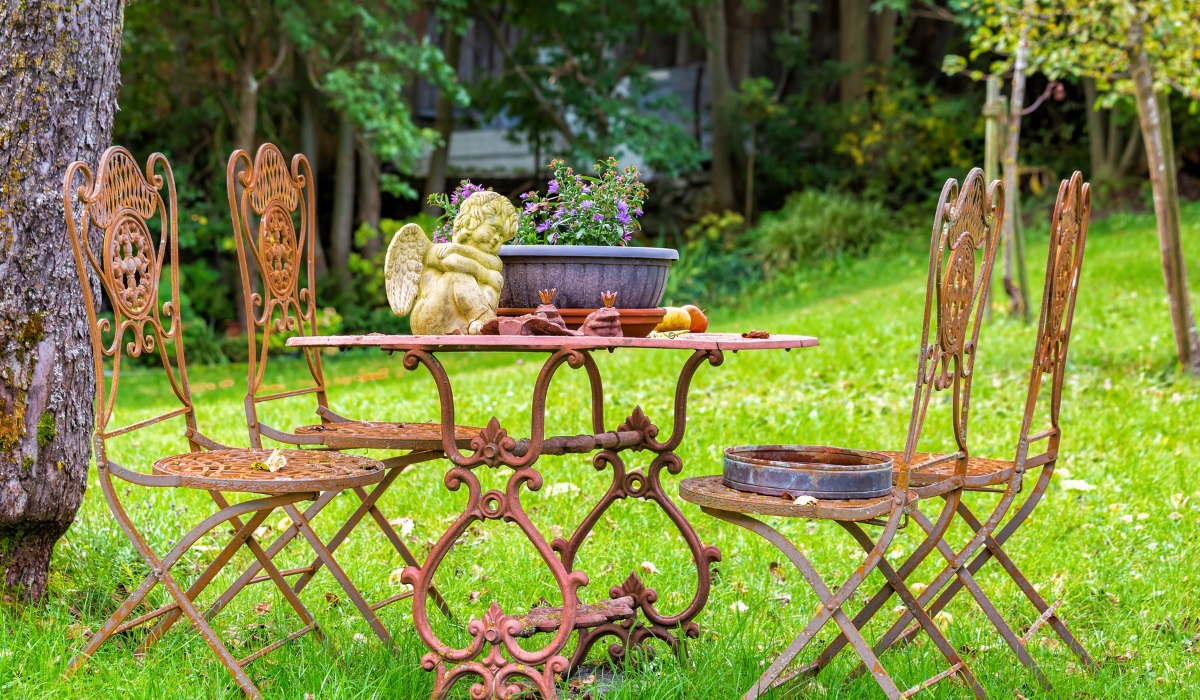
NOTE - If you spot any rusty areas where the iron is deeply corroded to the point that structural integrity is compromised, then the process described in this guide will not be suitable and you should call in a professional, or consider replacing the affected piece of furniture.
Step 2 - Clean Furniture Surfaces
Once you have a good idea of the rust levels you will be dealing with, you should begin by cleaning your garden furniture. The aim is to thoroughly remove grime, dirt, paint chips and any other loose debris.
NOTE - You’re not trying to completely remove rust stains. You just want to clear the surface in preparation for painting with a rust converter paint — more on that later.
Wire Brush
The best way to do this is to begin with a stiff brush, preferably with wire bristles. Work the brush over the surface where rust is showing. Be sure to get into every crevice and detail.
The goal here is to remove larger pieces like loose rust and paint chips.
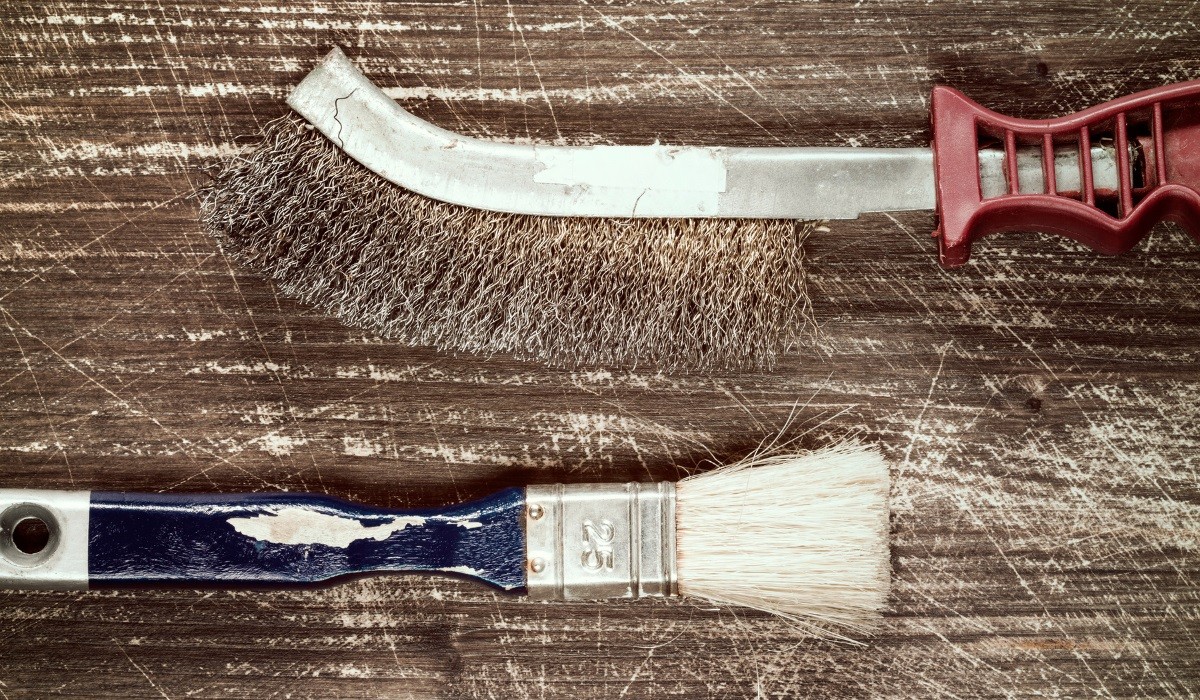
Steel Wool
Next take dish soap with warm water and steel wool, or a product such as Brillo Pads, and gently scrub to remove finer, more stubborn dirt and blemishes.
Wipe down with a clean cloth and allow to dry naturally.
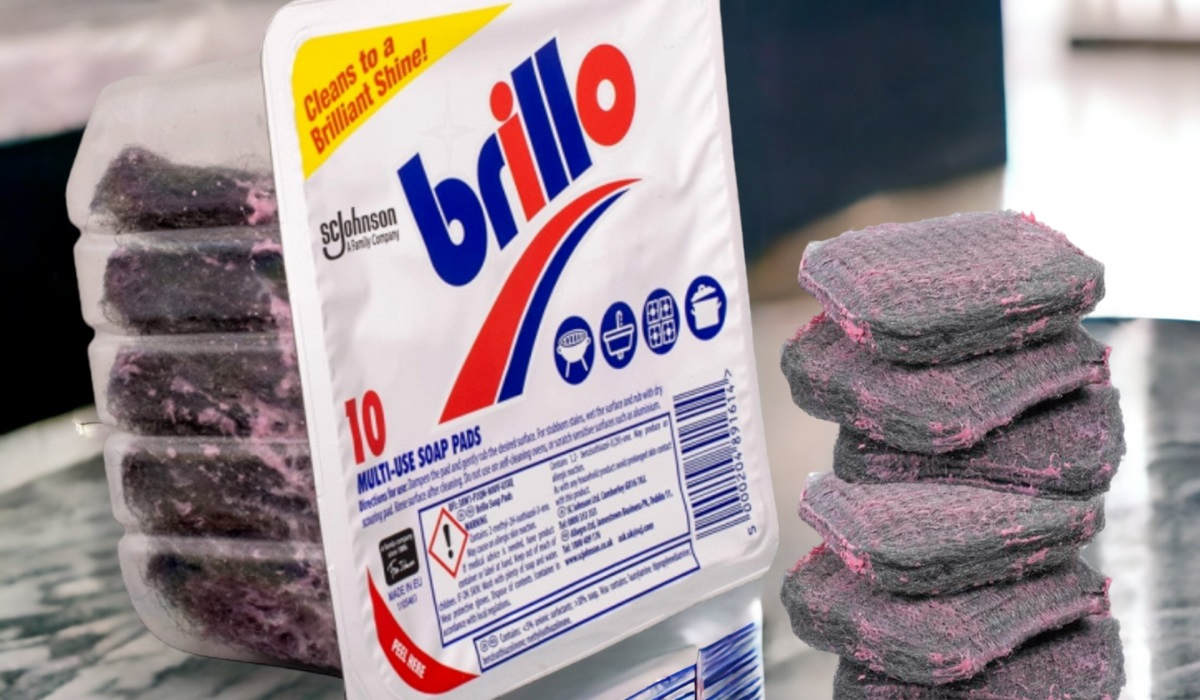
Step 3 - Smooth Down Rougher Rust
If the surface of your garden furniture is heavily rusted, or the rusted area is particularly prominent, it may be a good idea to use a sanding block to smooth out those areas. That will give the finished job a smoother look.
For heavier rust, begin with a sanding block of around 60 grit, or for light rust start at around 120 grit.
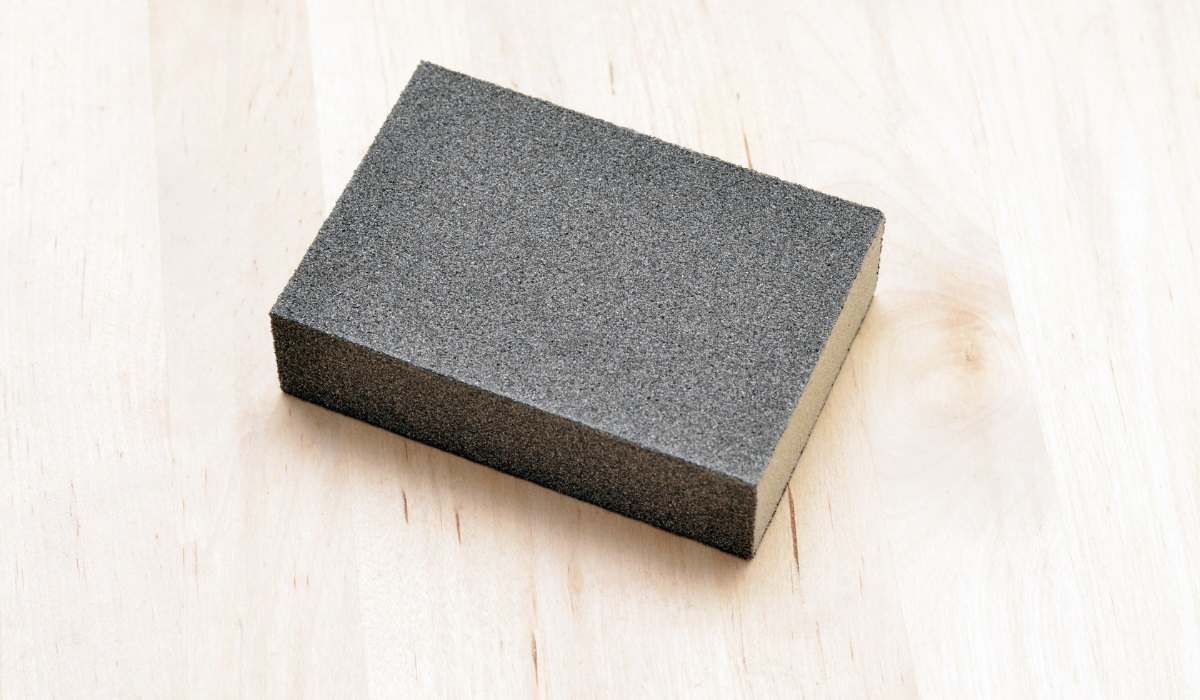
For very heavily rusted surfaces why not invest in an electric sander? They’re not massively expensive to buy and come in handy if you enjoy furniture renovation or home DIY.
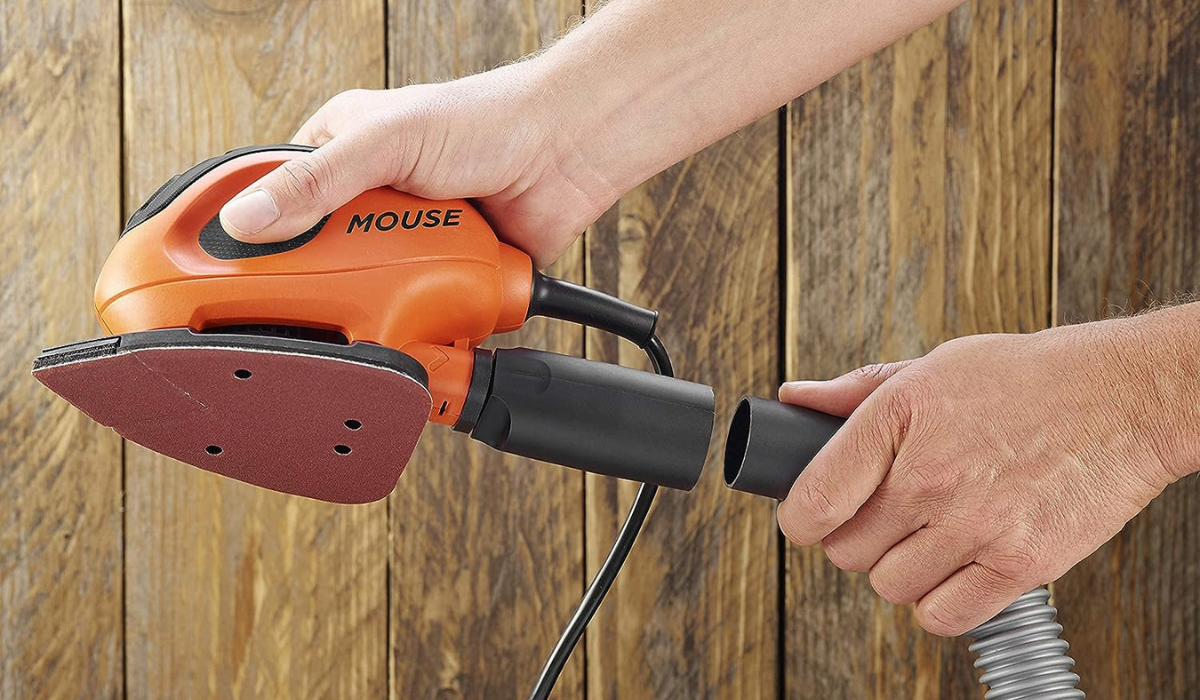
Image Credit: Amazon
Once your iron or furniture is cleaned and smoothed down it will be ready for rust converter paint application, either brushed or sprayed on.
Step 4 - Apply a Direct to Rust Paint
Once your surfaces have been cleaned and smoothed down, it's time to finish your iron garden furniture with the right type of paint.
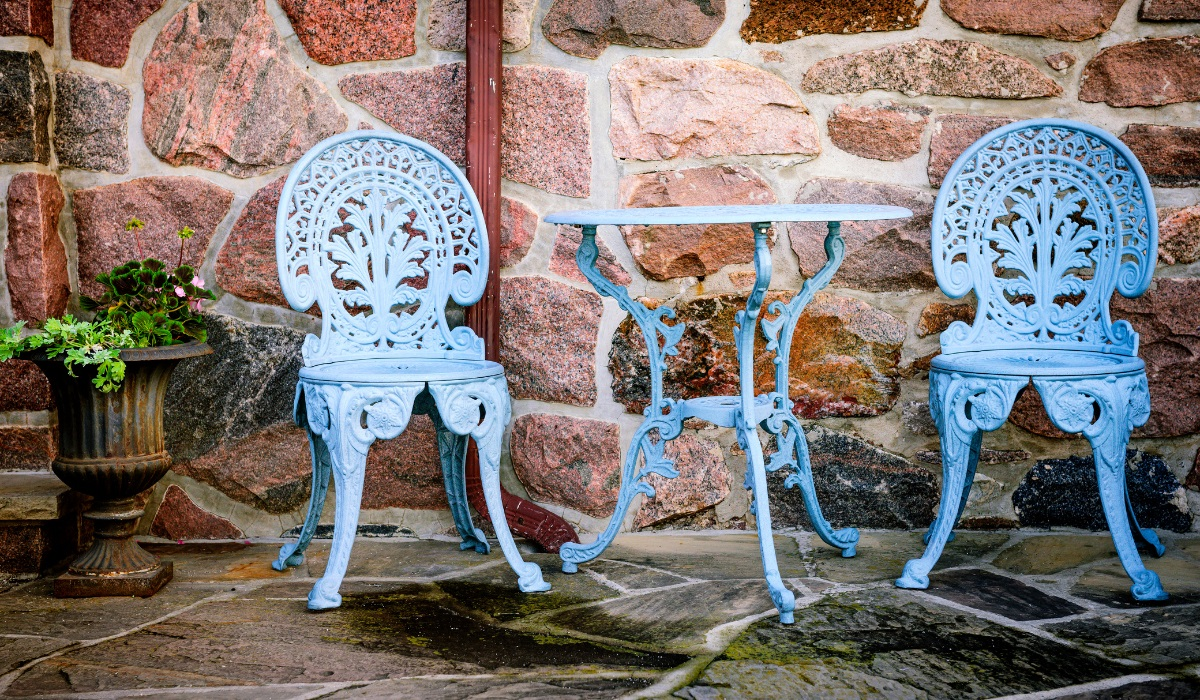
A direct to rust paint acts as a primer, or a rust converter, so no need for a separate primer product.
As the name suggests, rust conversion is a process that combines with residual iron oxide (rust) to transform, or convert it by chemical reaction, into an inert substance to prevent further corrosion damage.
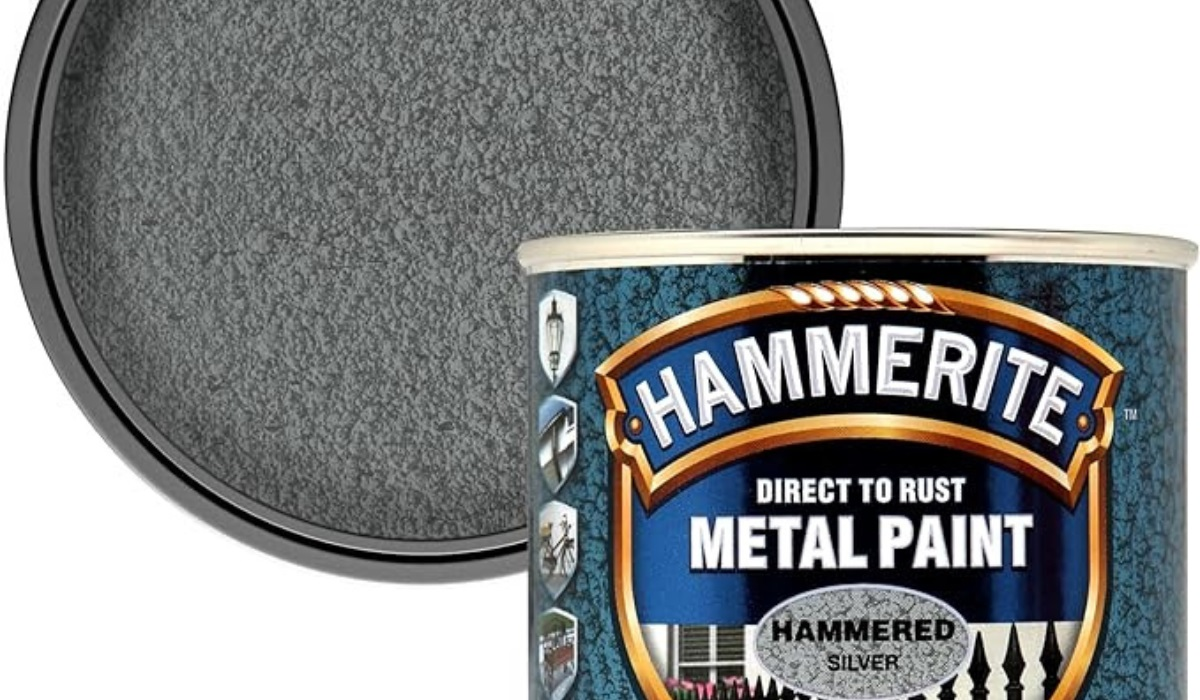
Depending on the areas that you will be painting, you may be using a smaller roller as well as brushes. Or neither if you choose a spray can option. Either way, the key thing to remember is that surfaces are covered evenly and are left to dry properly before applying a second coat — two coats is usually sufficient.
Use a roller to cover larger surfaces such as tabletops or garden railings, with a brush used elsewhere — be sure to pay particular attention to more intricate areas of your furniture items for even paint coverage.
With a spray direct to rust paint, ensure you hold the can parallel to the surface and work back and forth in smooth, even movements for consistent paint application.
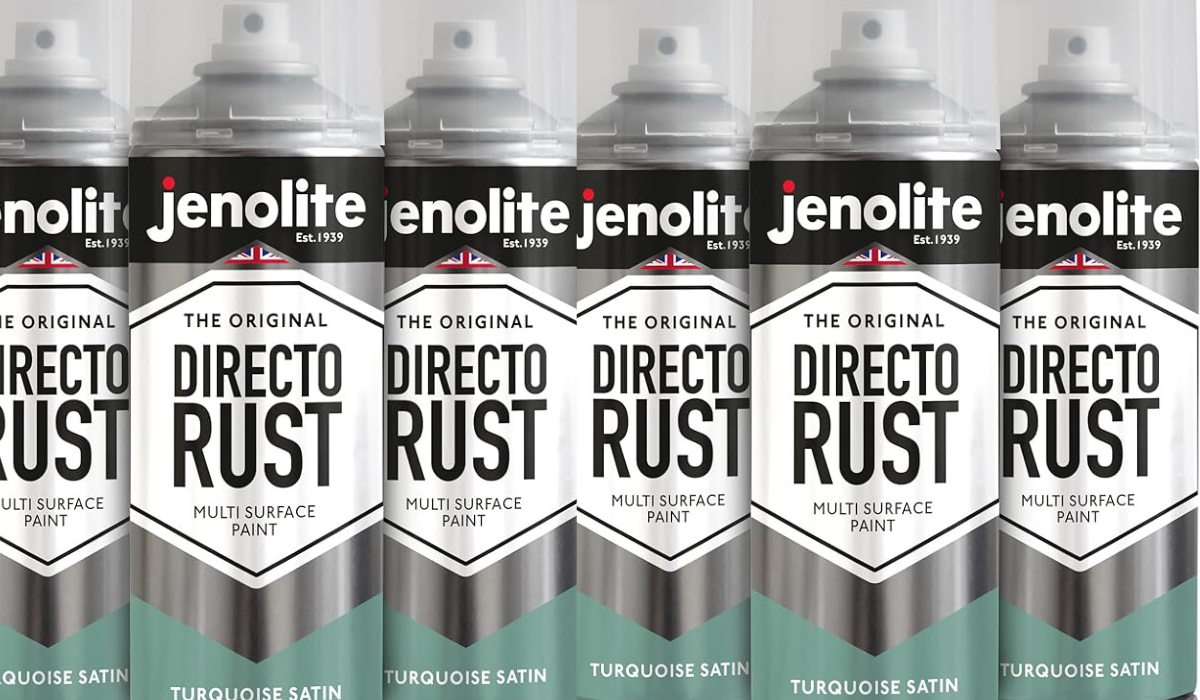
Ultimately how you finish your iron garden furniture is up to you.
You may want a traditional vibe. If so, perhaps choose a hammered black paint. This will dry with a pitted look, reminiscent of old style, Victorian-esque cast iron. Or you could go for classic iron colours, such as dark green or dark red.
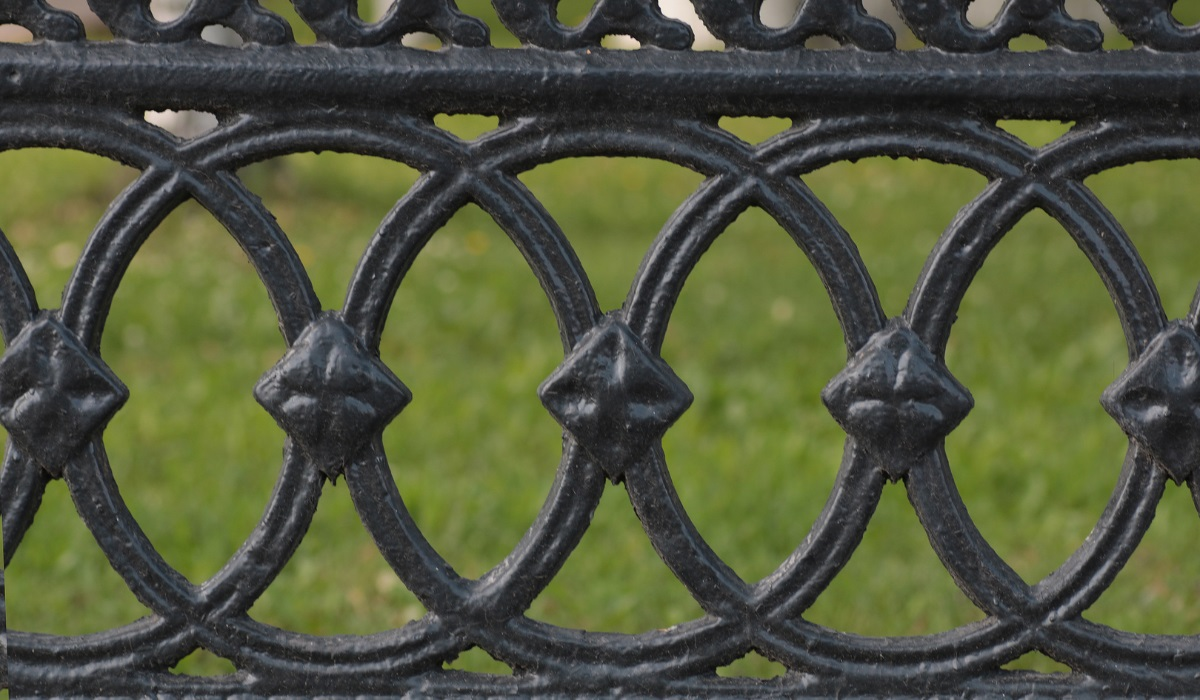
There are a wide variety of direct to rust paint colours available too, perfect for iron patio furniture in brush-on form or in spray cans.
Finally, always remember to paint or spray on a protected surface and to mask areas of your furniture that you do not want to paint. And as always, follow the paint manufacturer's directions for use.
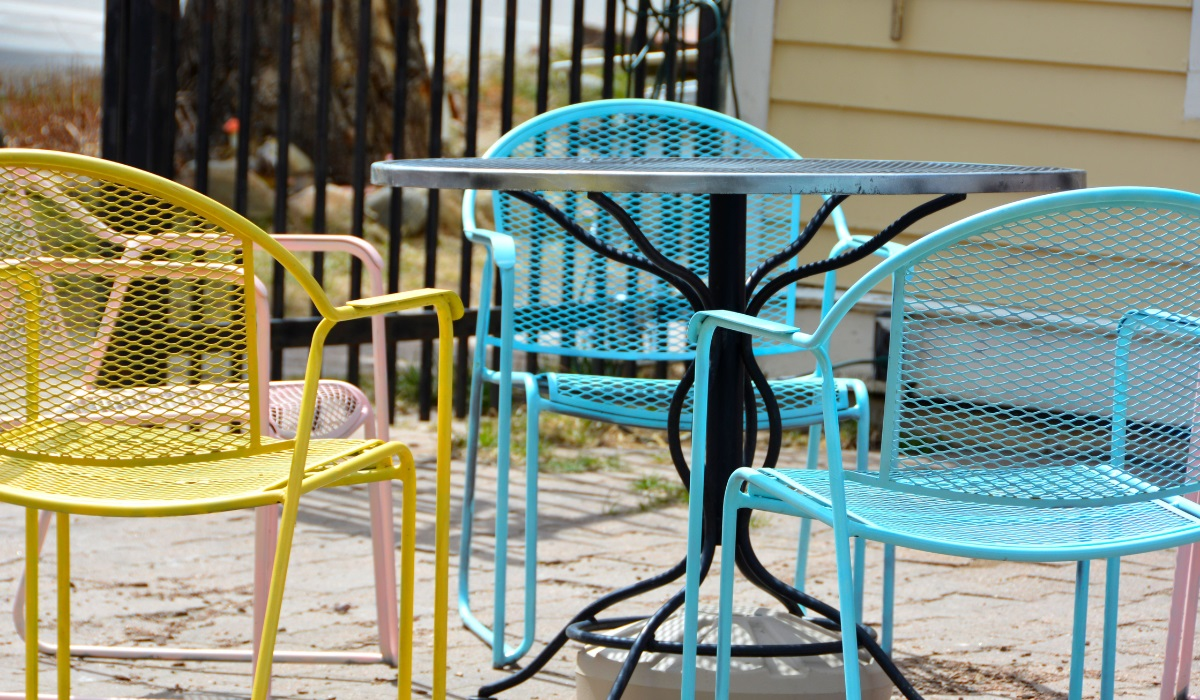
Over to You
The method used in this article to treat your rusty iron garden furniture can be applied elsewhere. For example, why not try recycling? Armed with you rust renovation knowhow, keep an eye out for metal garden furniture pieces for sale that might be a bargain due to their (superficial) poor condition. Consider revitalising them for yourself. Or why not renovate them to sell on (or 'flip') for a profit?
You can find loads of garden furniture flipping inspiration on Pinterest. Check it out.
Final Thoughts
Hopefully this article will have demonstrated how straightforward it can be to get your garden and patio furniture, and other iron or steel outdoor surfaces, looking refreshed to serve another year helping to make your garden and outdoor spaces more habitable and inviting places to be.
Remember, this method of restoring ironwork can be applied to any rusty iron hardware products and other iron garden ornaments.
For more home and garden ideas, check out our blog which offers DIY inspiration articles as well as how-to guides on a range of topics, including how to restore wooden outdoor furniture and how to clean rattan garden furniture.

